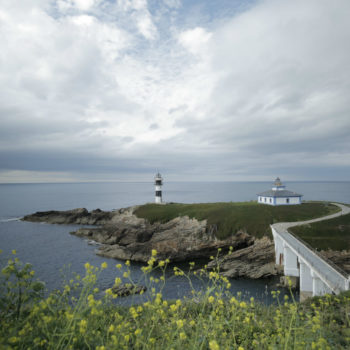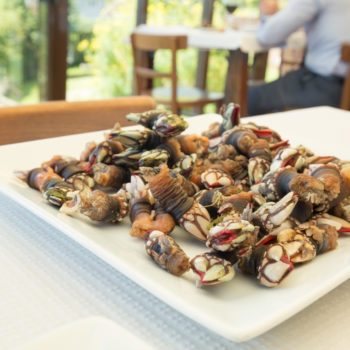
Ultimate Road Trip Itinerary Galicia, Spain
We spent around three days exploring Galicia, Spain, the region in the north west region of the country. I’ve put together the ultimate road trip itinerary for Galicia and the northern coastline of the region to help you plan your very own trip.
Quick Tip: Take a look at this article you’re looking for more inspiration on places to visit Spain.
The trip started out in La Coruña as we headed east along the wind swept rugged coastline, an area filled this towering cliff faces, scenic lighthouses, hazy chilled out surf beaches and quaint colourful sleepy fishing towns. Our journey came to an end in the port town of Ribadeo, on the Galician side of the border with Asturias. We drove back to La Coruña airport (about an hour and a half) before flying back London Heathrow, but you could easily fly into La Coruña and drive on through Asturias to fly out of Asturias airport (about an hours drive). We only spent three days in Galicia but packed an awful lot in, I’d recommend either focusing on the places you really want to see and visiting fewer or extending your time in the region.
Tip: Also take a look at a great article by Global Help Swap you’re also looking for things to do in Galicia, Spain.
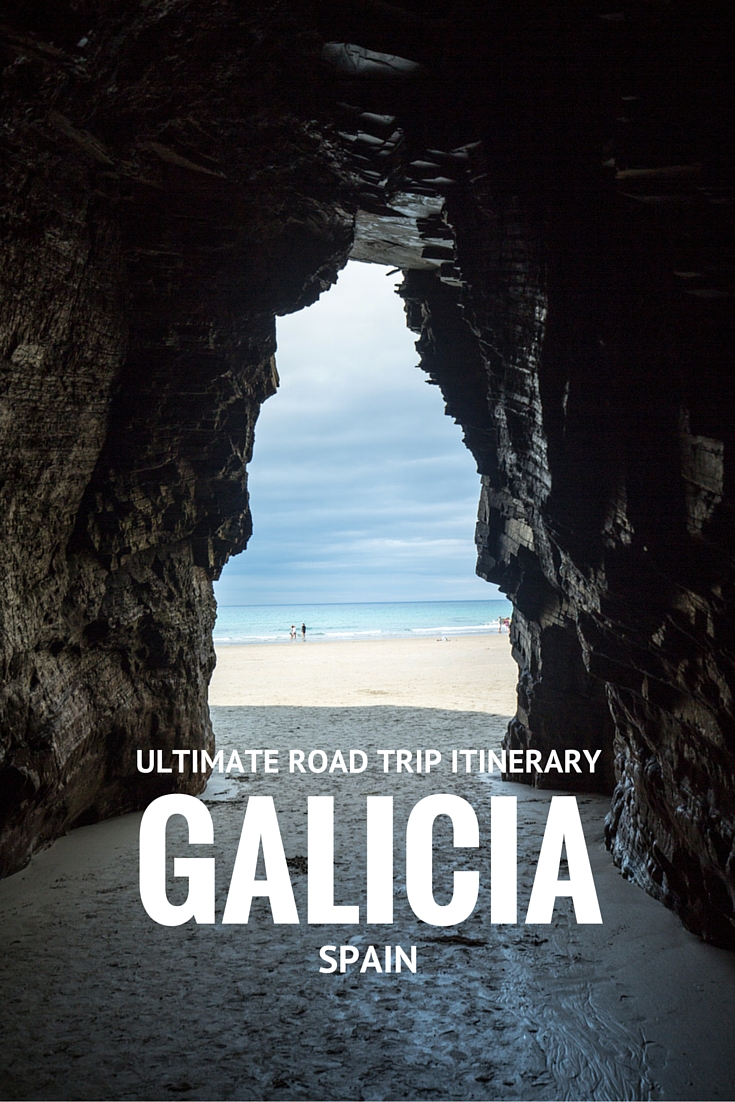
Unexplored Galicia
When I speak to friends looking for a holiday or a weekend break, the number one phrase I always hear is “We want to go somewhere… not that touristy?”. Well Galicia is pretty much completely unspoilt by tourism unlike some parts of Southern Spain. You’ll find local Galicians taking a holiday around their home region but it’s quite rare to bump into fellow tourists from the UK. This has largely been due to the lack of budget airlines flying to the region. So far, Galicia hasn’t really registered for majority of holiday makers, for anyone who’s looking to find somewhere “not touristy” it’s is a big opportunity.
The area is now opening up with a host of budget flight options with Vueling, who now have flight routes to La Coruña, Santiago de Compostela and even Asturias (neighbouring region to the east). It’s the perfect time to explore the northern coastal region of Galicia.
How to use this Itinerary
A quick note about how to use this page.
The map at the top of the page shows the places we checked into on our trip in order starting with “32.” as the first check in. You can also view street view on the map for certain locations, just click on “Street View” at the top of the check in list on the right. If there is no street view available this will say “No Street View”. You can also click on place names on the itinerary below to view where they are on the map.
Please note this is only a sample itinerary to give you an idea based on what we did in Galicia. We only really scratched the surface, but hopefully this gives you a taste of what is possible.
Starting from: La Coruña
Ending at: La Coruña
The Route Taking in the lighthouses, fishing villages, lookout points and beaches of the northern coastal part of Galicia.
Amount of time: Around 3 days
The Itinerary
The itinerary takes in the northern coastal stretch of Galicia, stopping of at magnificent panoramic views across cliff faces, bays, estuaries and beaches. We take in the wild rocky outcrops where historic lonesome lighthouses police the dangerous churning Cantabrian Sea. Along the way we stop off at some scenic traditional fishing villages as well as a hazy laid back surfing beach. There’s plenty of stops to experience the freshness of the local seafood and Galicia delicacies including some top quality dining experiences. The journey ends with a climb to the top of the oldest working lighthouse in the world and UNESCO World Heritage Site. It’s an itinerary packed full of unspoilt natural beauty and great friendly local hospitality. Galicia is a superb place to explore if you’re looking for something more adventurous.
Day 1
![]() 31 Aeropuerto de A Coruña (LCG) (Aeropuerto de A Coruña)
31 Aeropuerto de A Coruña (LCG) (Aeropuerto de A Coruña)
With a late afternoon Vueling flight from London Heathrow we arrived just after 8pm, which in Spain terms is actually very early in the evening. It stays light till 10pm in Galicia from June to mid-August.
La Coruña is known for excellent fresh traditional food but if you are looking for something modern but with its roots still firmly entrenched in local cuisine, then a visit to Michelin rated Arbore Da Veira is in order.
Resident chef Luis Veira specialises in serving an intriguing range of thoughtful dishes, often playful in their arrangements but certainly innovative and full of interesting textures and flavours. Each dish is served on a unique piece of crockery, adding to the experience and relating the food with its tradition.
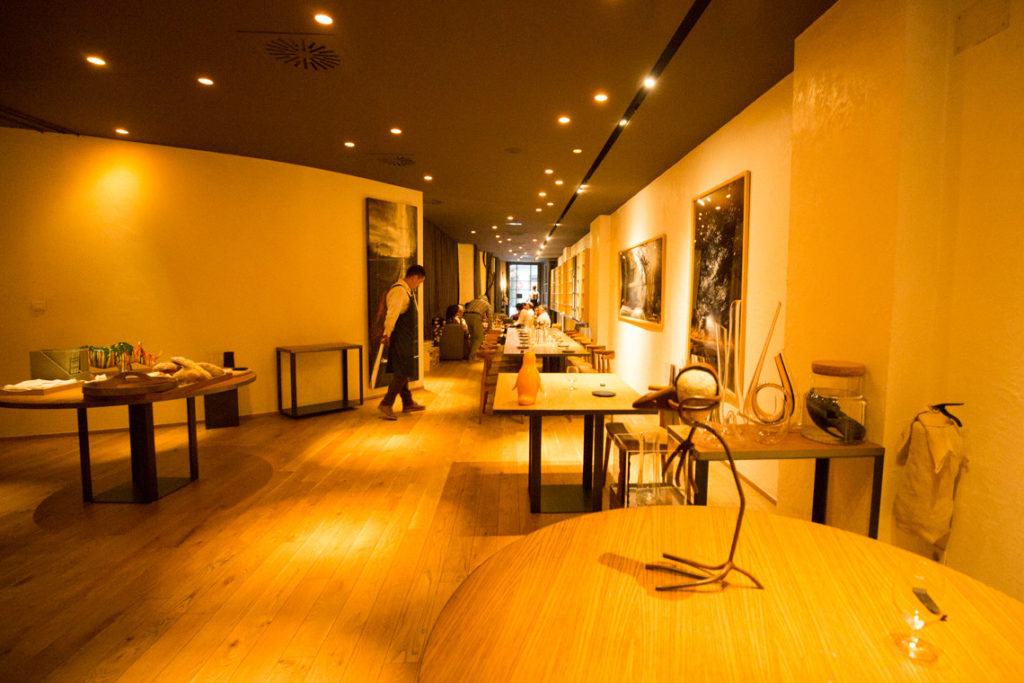
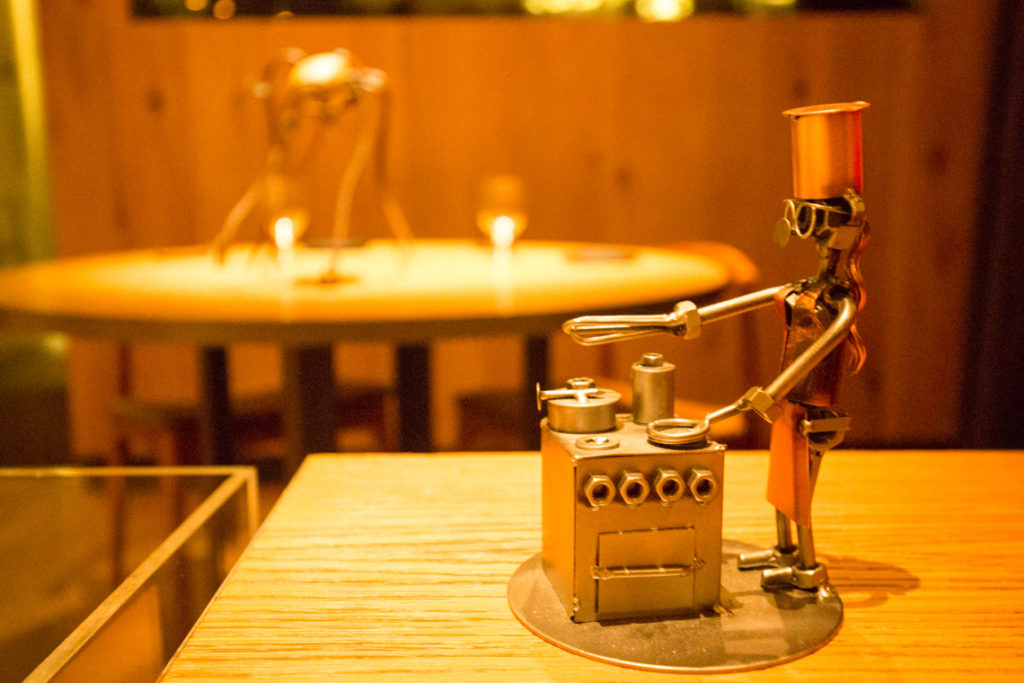
There’s a ten course menu consisting of eight dishes and two desserts for 55 euros or a fifteen course menu with twelve dishes and three desserts for 70 euros. Allow yourself plenty of time as you’ll find yourself intrigued by every dish and the experience should be one to savour.
It’s much more than just fine dining, Arbore Da Veira is a place to take your time, relax and experience dishes that are innovative without losing touch with their Galician origins. The decor is trendy whilst being relaxed, we sat in a private area separated by a curtain and with comfy relaxing area for drinks before dinner.
Website: Arbore Da Veria Website
After all 14-15 courses (I’ll be honest, I lost count) at Arbore Da Veria we wandered back to our hotel just a five minute walk away. The Hotel Riazor had a retro charming old vibe to it, a lovely view out onto the beach from my window and a decent breakfast. After a decent nights rest, we were up early and checked out ready to explore Galicia.
Day Two
First stop is the picturesque town of Pontedeume, where you can wander the old quarter through meandering side streets and compact plaza. This little seaside town has a sleepy feel about it and it’s worth walking around and exploring the side streets, old churches and forts. If you look up you’ll also notice the galerias, Galician balconies that are enclosed in glass to protect you from the wind and rain.
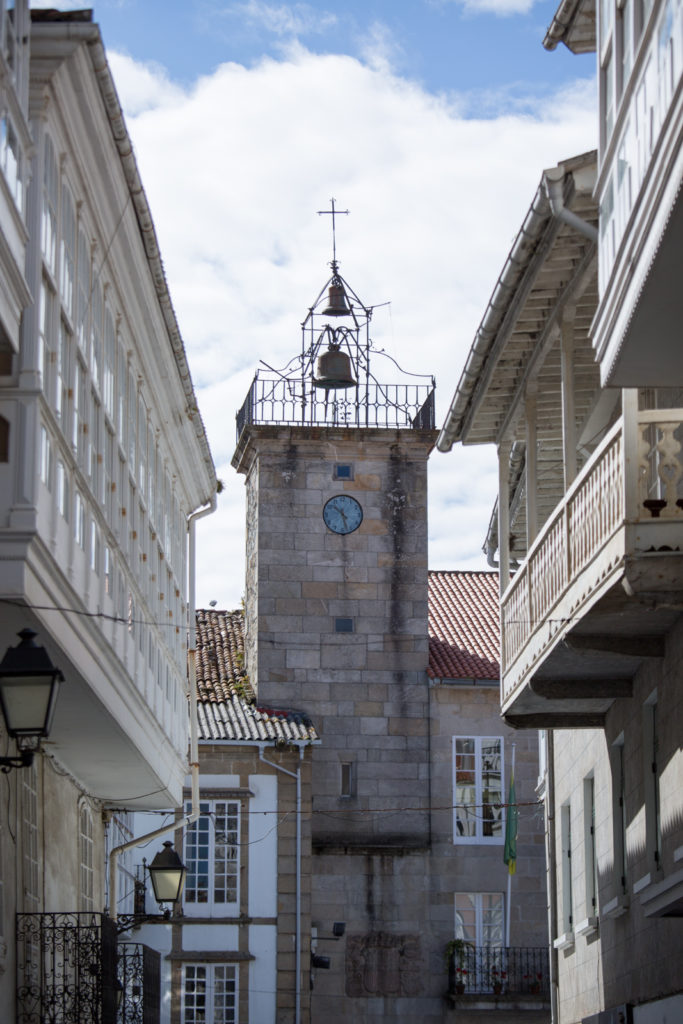
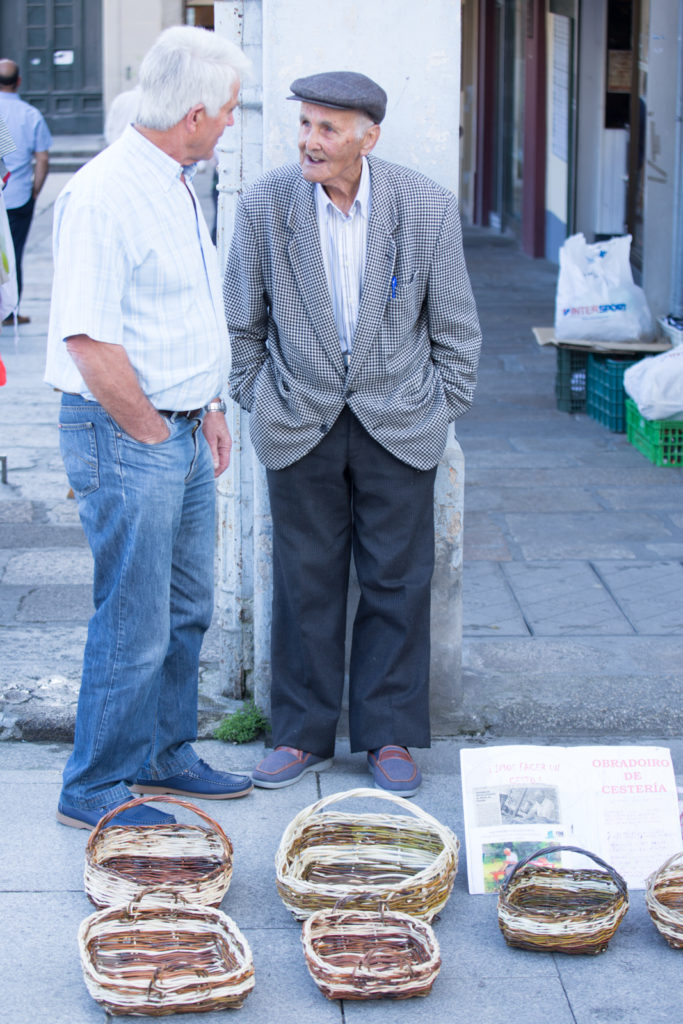
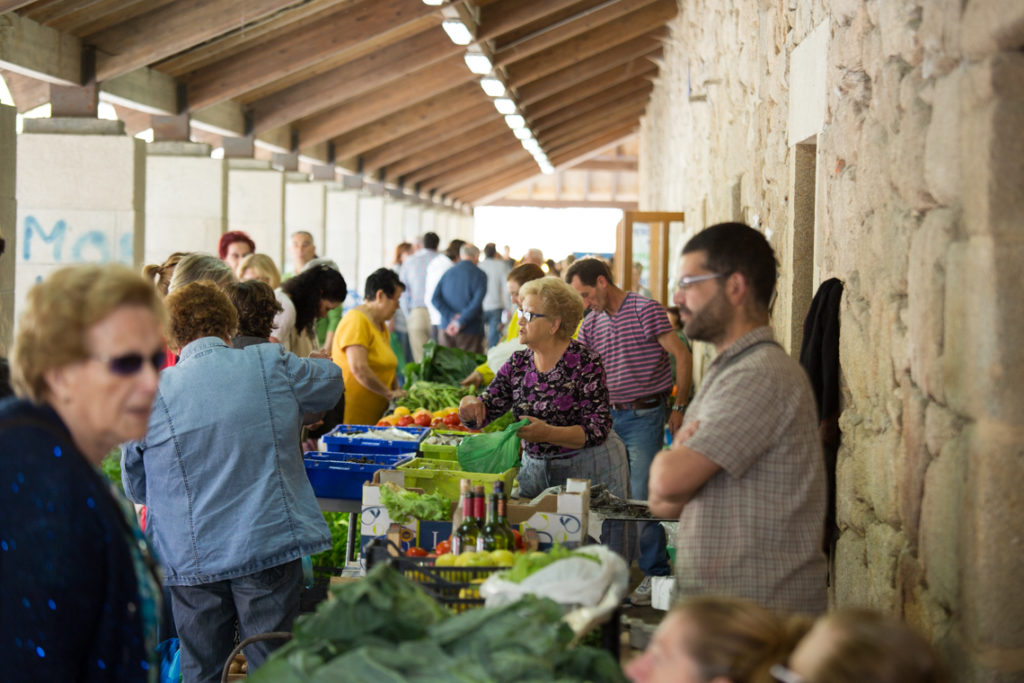
On our way back towards the port we passed the local market selling plenty of fresh seafood including squid covered in black ink.
Up on a hill away from the port you may stumble across the sixteen century chapel built by Don Fernando de Andrade. It’s tucked away and surrounded by houses and narrow streets.
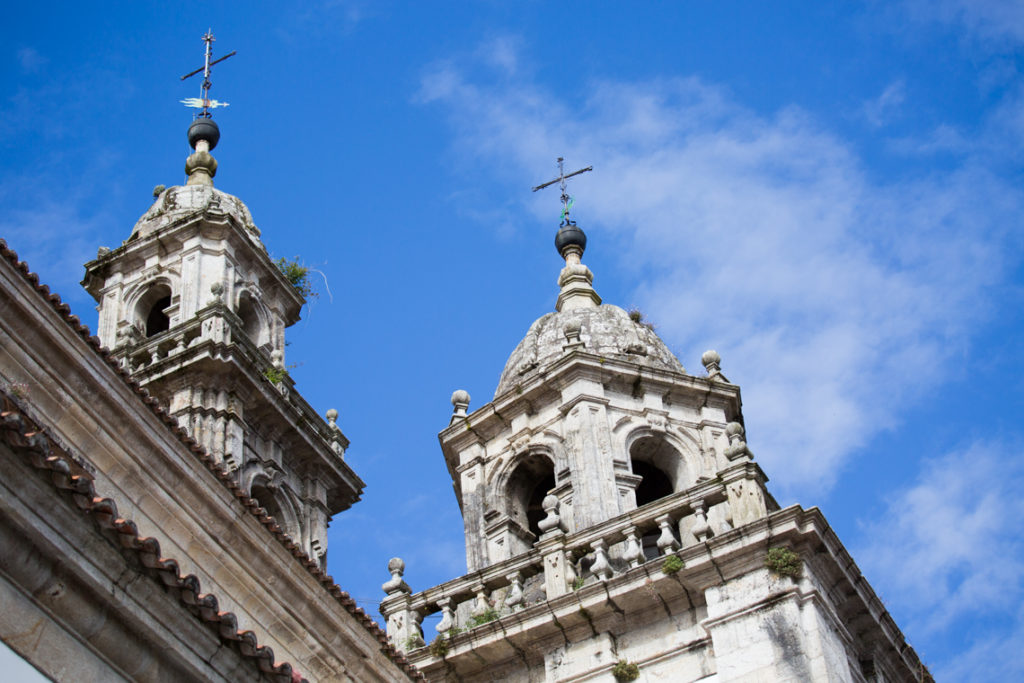
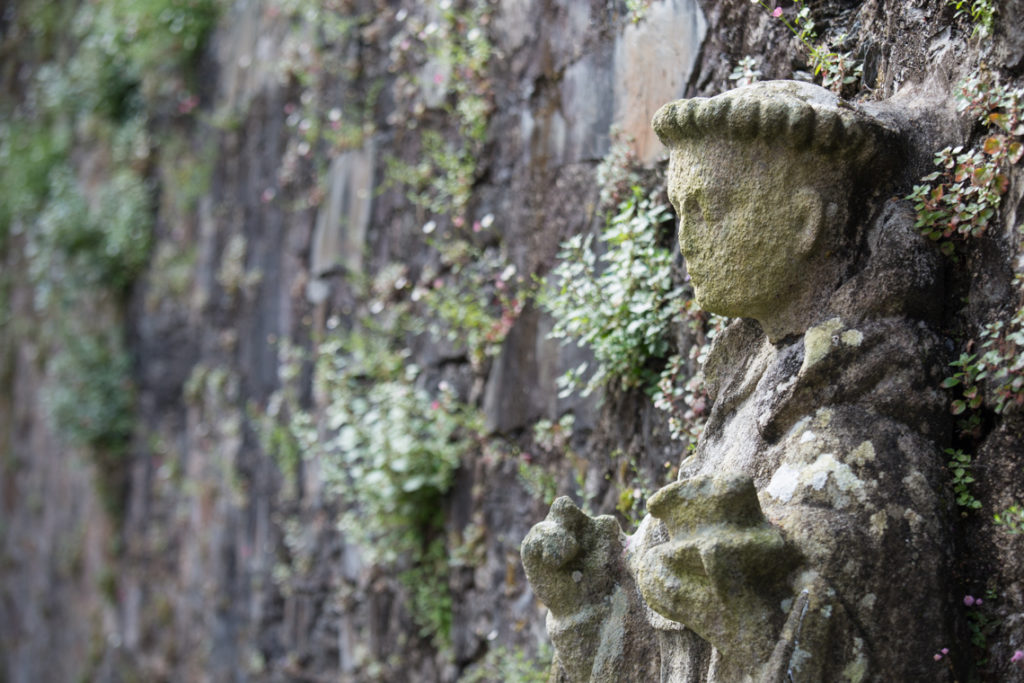
It isn’t the only church in the area however, there’s also the Romanesque San Martin de Andrade and San Miguel de Breamo from the 12th century. If you have time it’s worth seeking them out.
Back at the port in Pontedeume you can take a short boat ride over to Redes. We sailed with Altavela on a little motorboat across the calm waters of the estuary, under a couple of bridges to the tiny little fishing village of Redes.
Website: Altavela Website
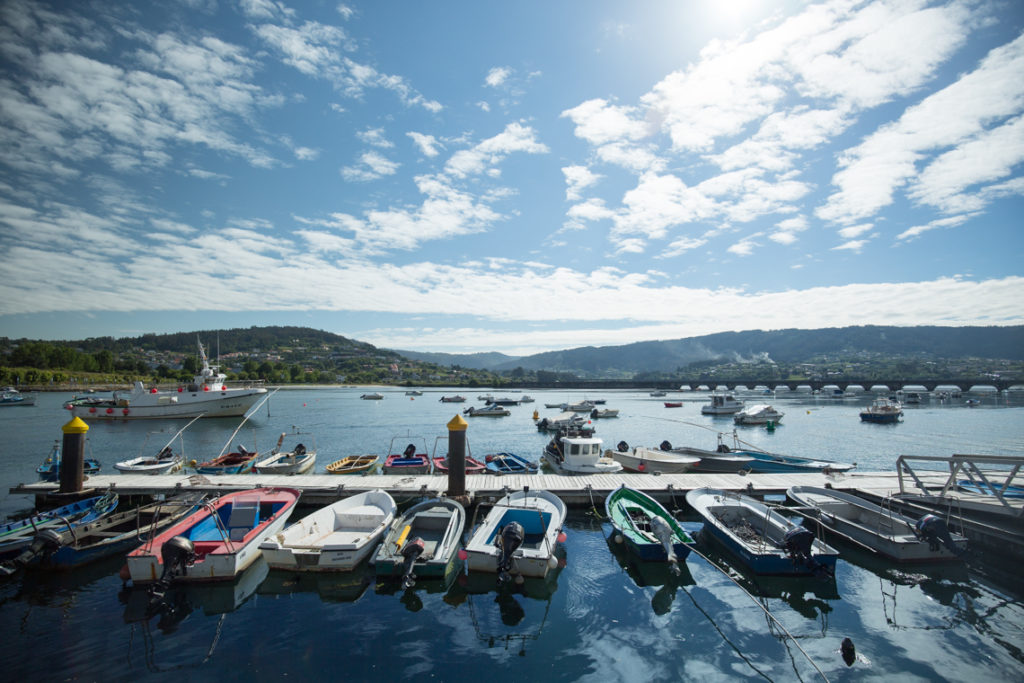
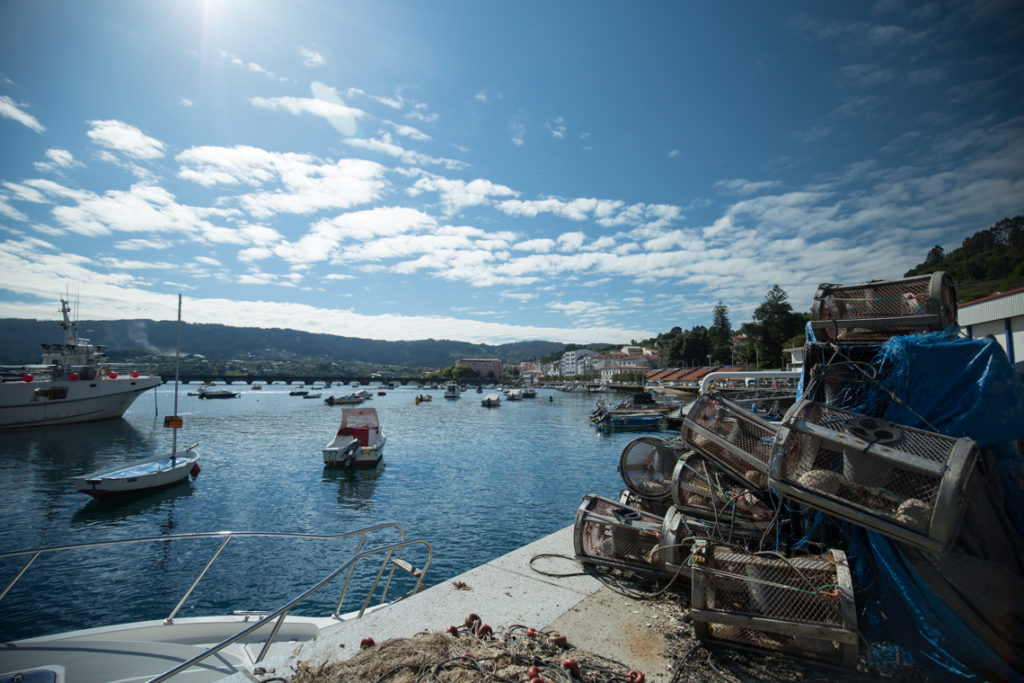
Calling Redes “a port” is slightly misleading as it’s a super tiny, but beautiful little fishing village and marina with colourful old houses overlooking the water. You’ll also noticed old wooden structures standing in the shallower water, these were used to hang and dry out fishing nets after a day out at sea.
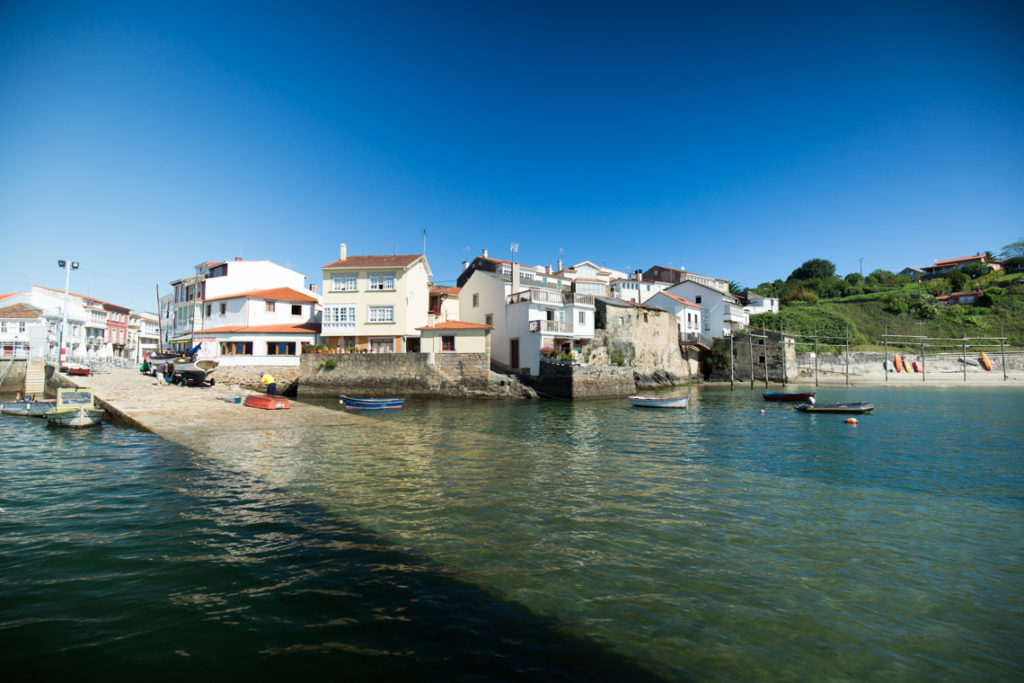
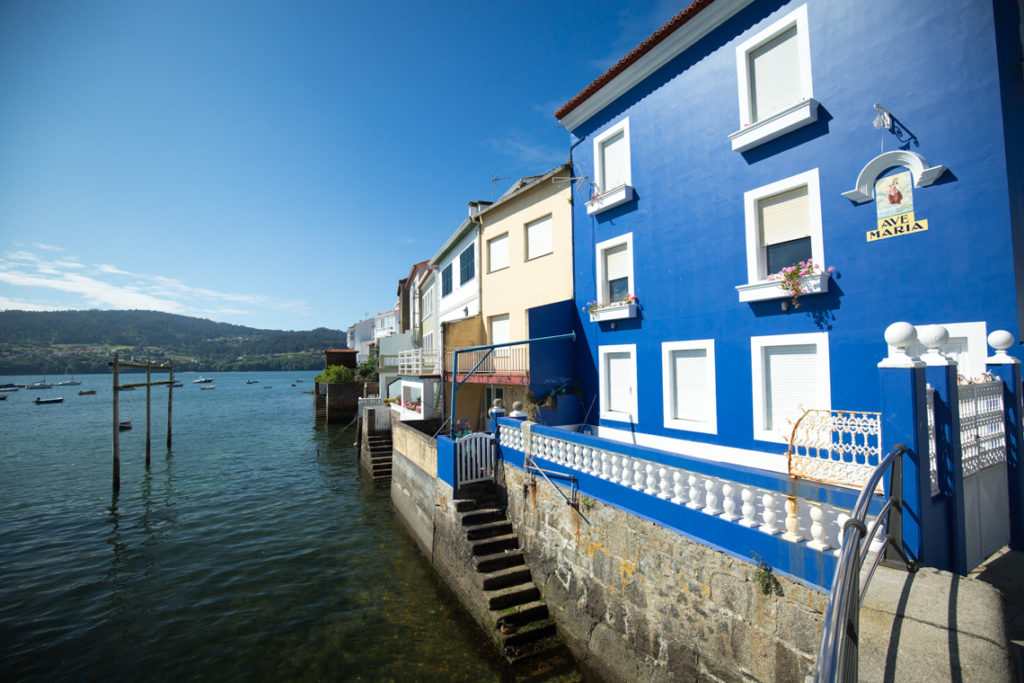
A short walk uphill to the west (as you arrive in the port) will take you up a quiet little street to a lookout point over the bay. Some of the houses here have beautiful colourful gardens with expansive views out on the water.
Some of the buildings here are full of character, with colourful decaying old doors and windows right next to houses that are immaculate looked after with window boxes of beautiful flowers.
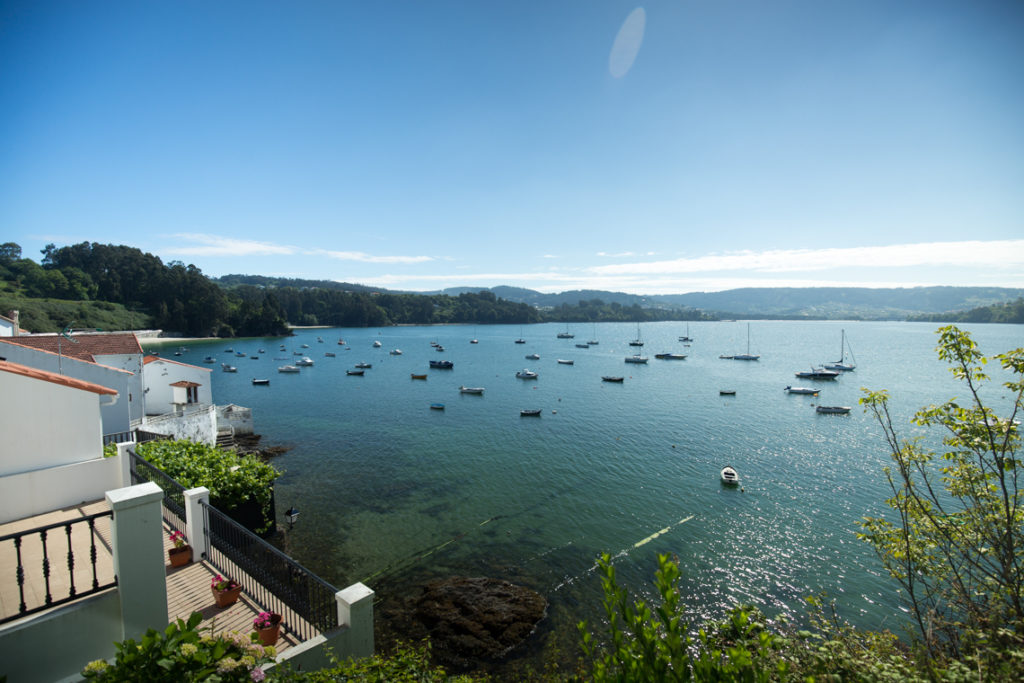
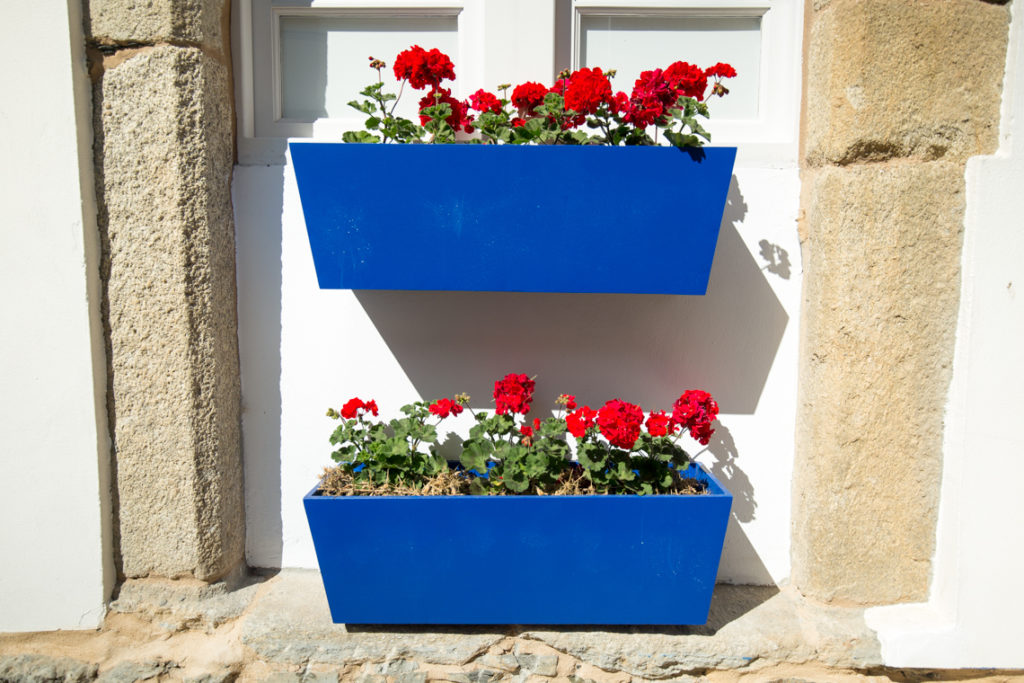
If you’re looking for a chilled out beach to surf on then there’s plenty in Galica. Praia de Doniños ticked all the right boxes. The waves looked just the right height and there was a group of surfers out on the water practicing. It’s not a built up area, just a simple car park and lovely little beach bar to make a beeline for after sunbathing or hitting the surf.
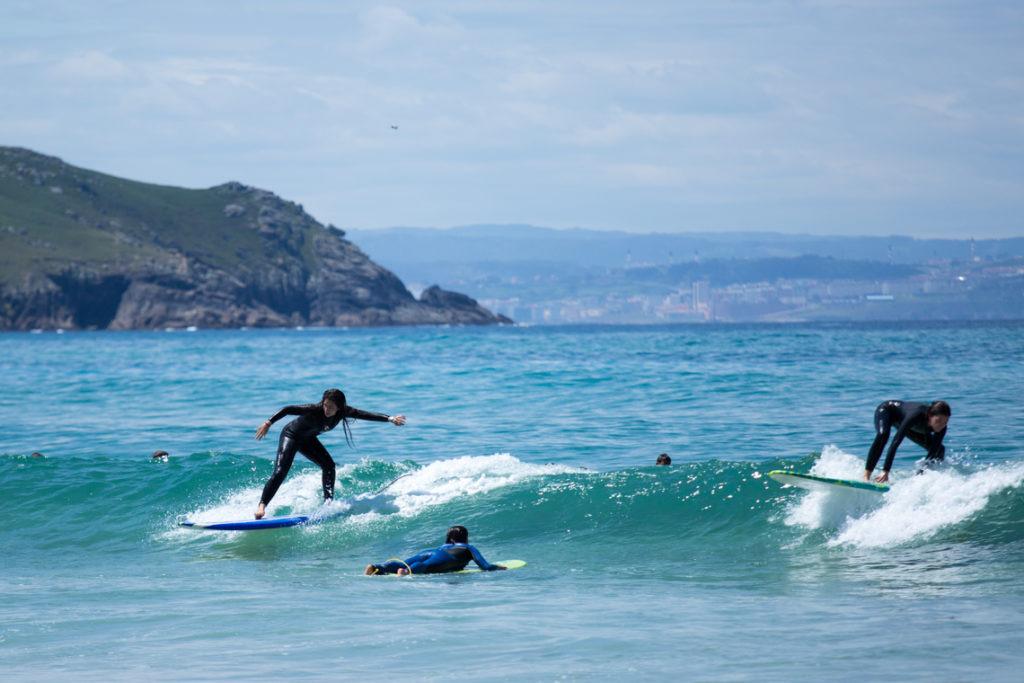
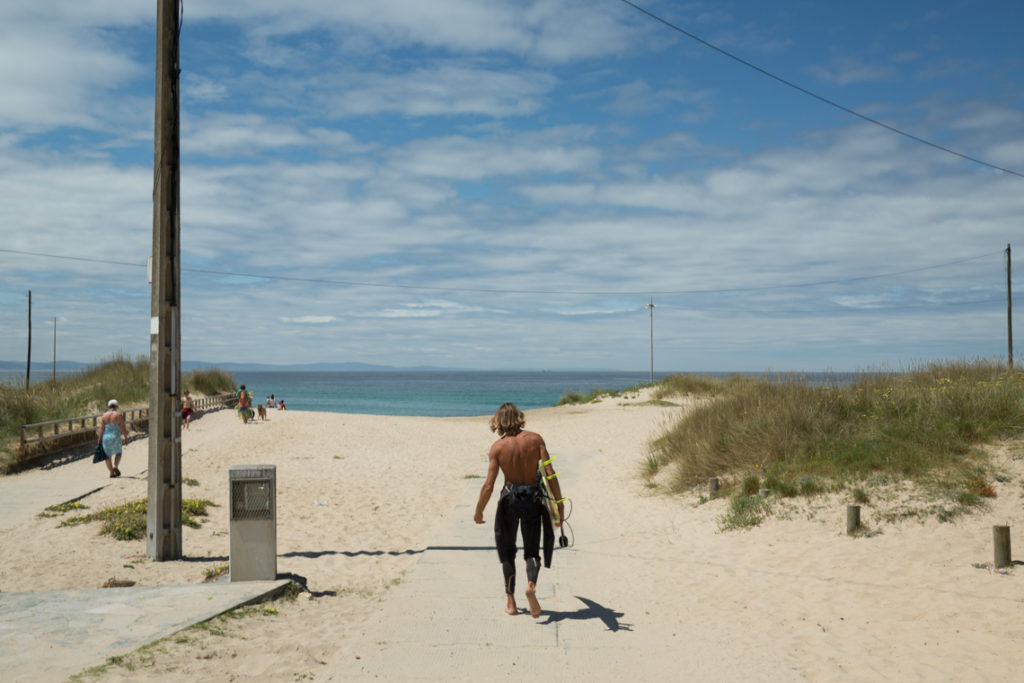
There’s a natural beauty to Praia de Doniño, with houses and buildings set back way beyond the sand dunes that shelter the beach. If you’re looking to relax on the beach or go surfing you could easily spend at least half a day here.
We stopped off at Leira Antiga, for lunch and the chance to sample more of the local fresh seafood. Leira Antiga is a small hotel and restaurant that overlooks the bay of Cedeira. It was also a chance to try a bottle of Estrella Galicia 1906, a stronger version of Estrella Galicia at 6.5%. It’s a good beer and certainly another option if you’re looking for something a little stronger. Those looking for something to blow your socks off should try to hunt down a bottle of Estrella Galicia 1906 Red Vintage (it’s 8%), unfortunately I didn’t get the opportunity this time around.
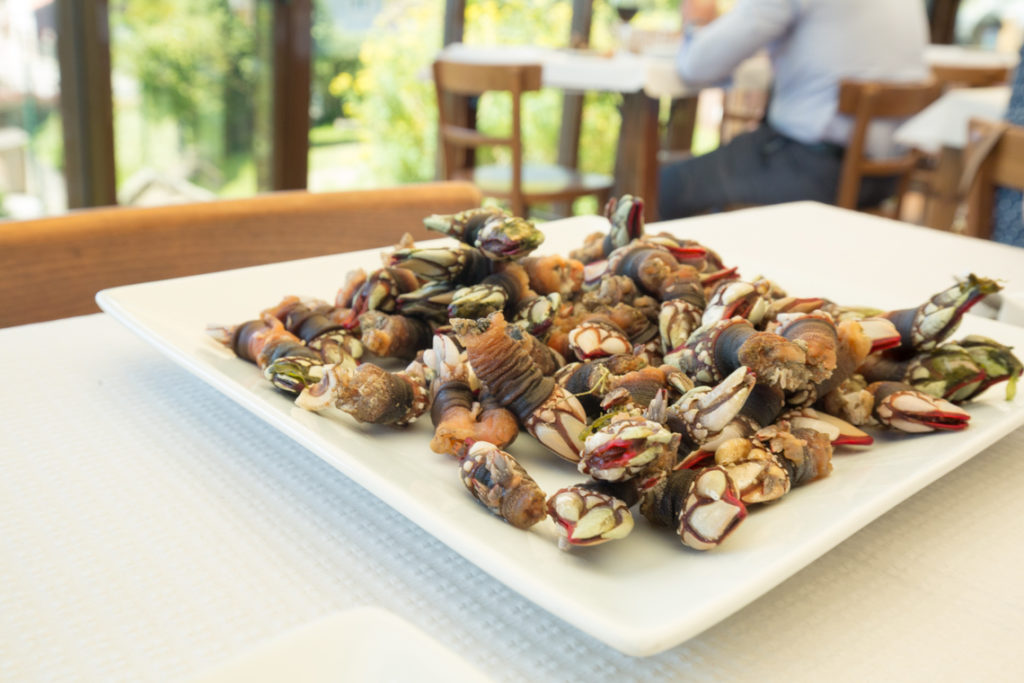
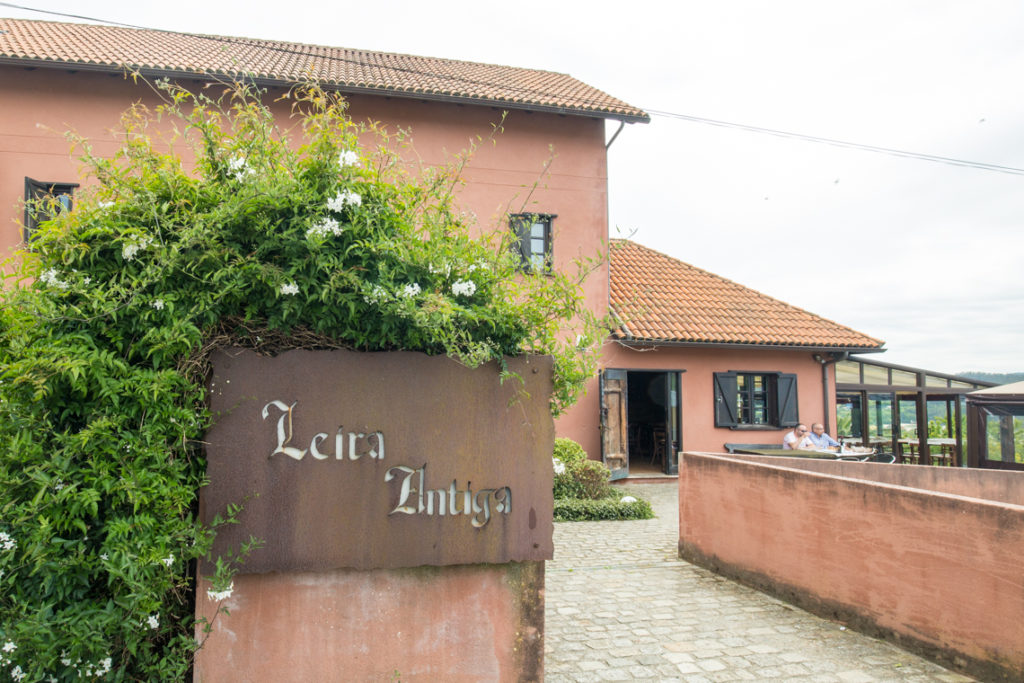
The most interesting dish we tried at Leira Antiga were barnacles. Reptile crawl like in appearance, these were actually really tasty. Like most Galician seafood, the barnacles were served just as they are without any sauce, but extremely fresh. There’s a knack to getting into a barnacles and my first attempts ended with barnacle juice running down my face. By the time I had finished there was a large collection of empty barnacles all over my plate that had nowhere to hide. These Galician delicacies aren’t easy to come by, people risk their lives and some die trying to gather them from the coastal rocks.
San Andrés de Teixido is an intriguing little village surrounded by fascinating but strange religious rituals. The sanctuary is small, high up but set back on wild clifftops overlooking the dangerous looking rocks and the sea beneath.
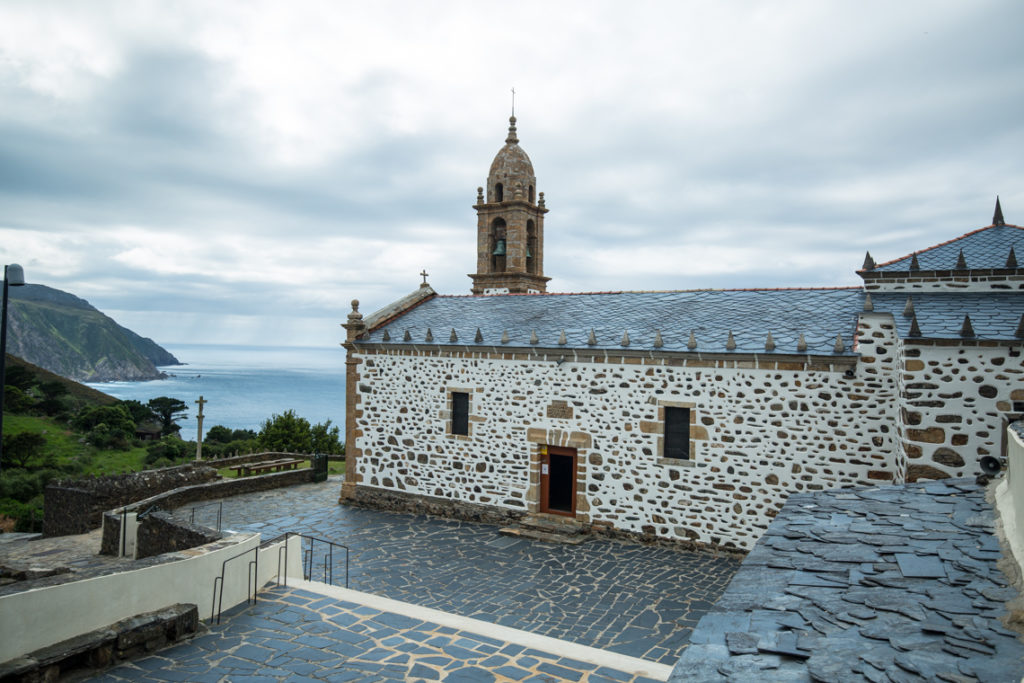

The village itself has a old saying, “If you don’t go when you are alive, you will when are dead”. If that’s not enough to haunt you then maybe the strange looking wax figures that are placed at the alter will. These unusual wax objects come in the form of hands, feet, full bodies and legs. People place these figures in the hope that there will be a miraculous intervention and will be cured of their aliments. Just one of many weird rituals of this cliff top sanctuary and village.
Vixía de Herbeira overlooks one of the highest cliff faces in Europe at 621 metres high. It’s a great lookout spot as the cliffs drop almost straight down into the sea, on a good day you can see out to Sisargas Islands in the south and to Estaca de Bares Point. When we visited, the cloud had rolled in but it gave the view quite a dramatic feel to it.
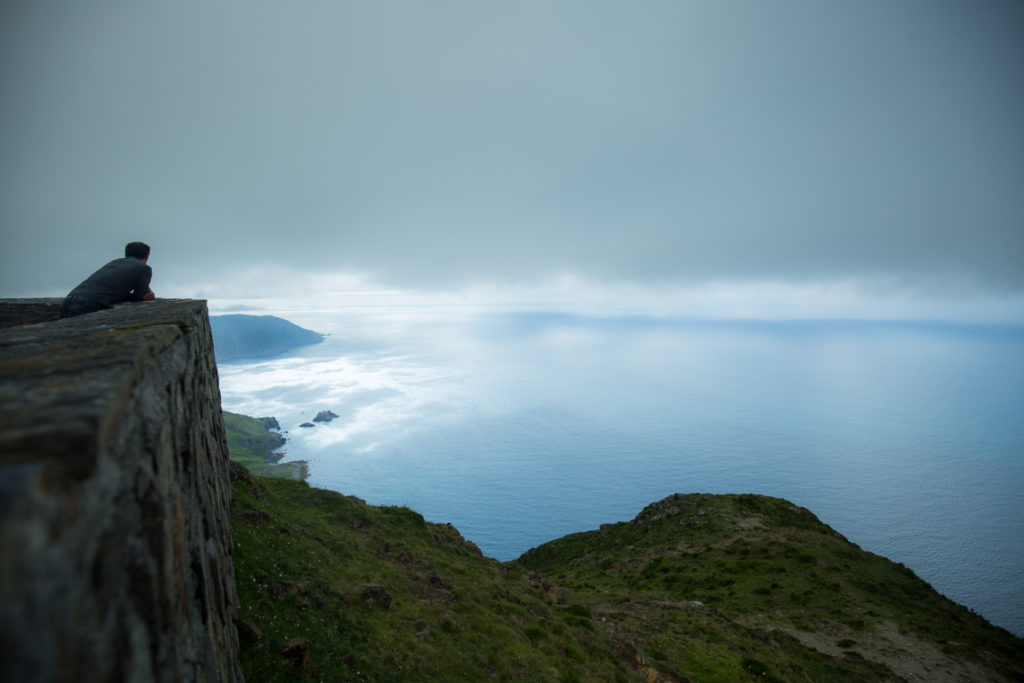
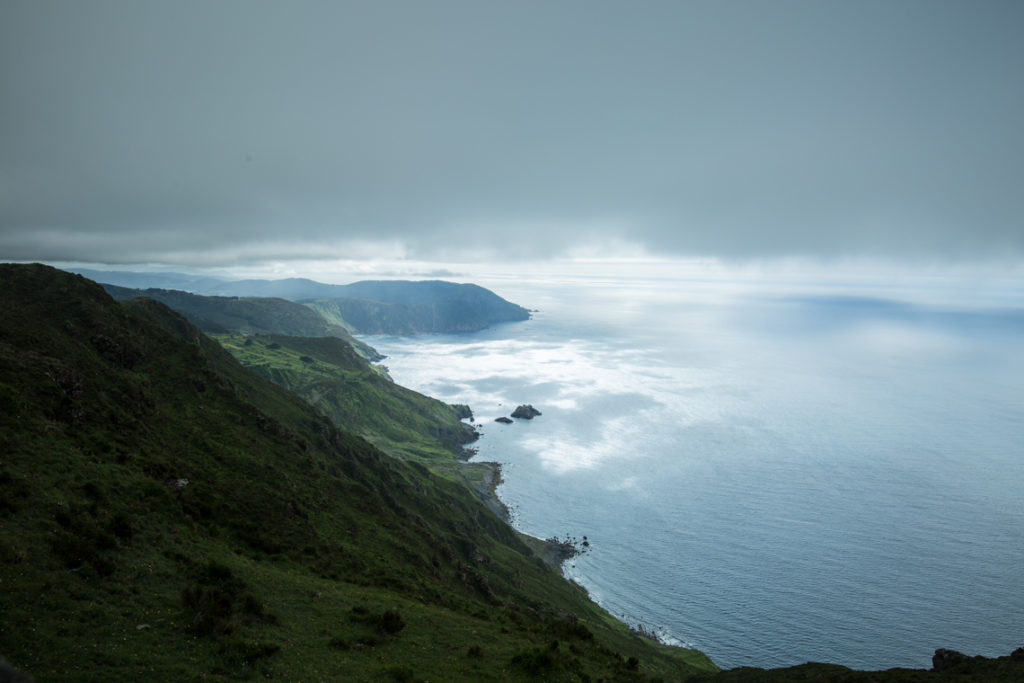
This lighthouse was built in 1984 and is a popular attraction in the region. It’s red and white colours are in stark contrast to the grey foot path and walls that surround it. It’s a wild sea ravaged lookout point, with jagged broken rocks protruding from the water and blustery swirling winds snaking around the lighthouse.
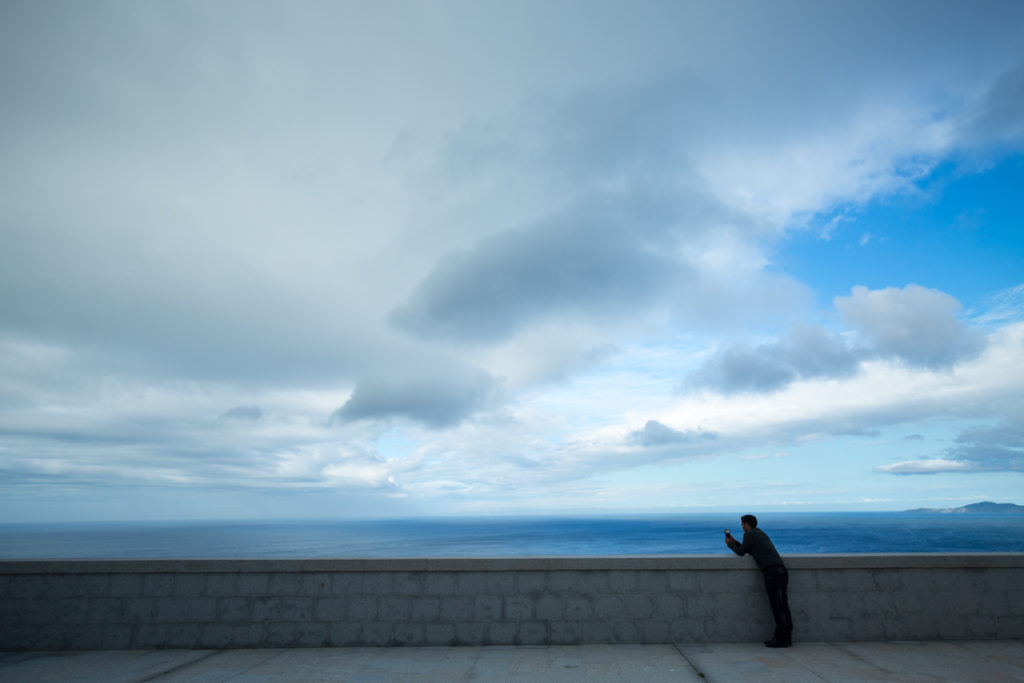
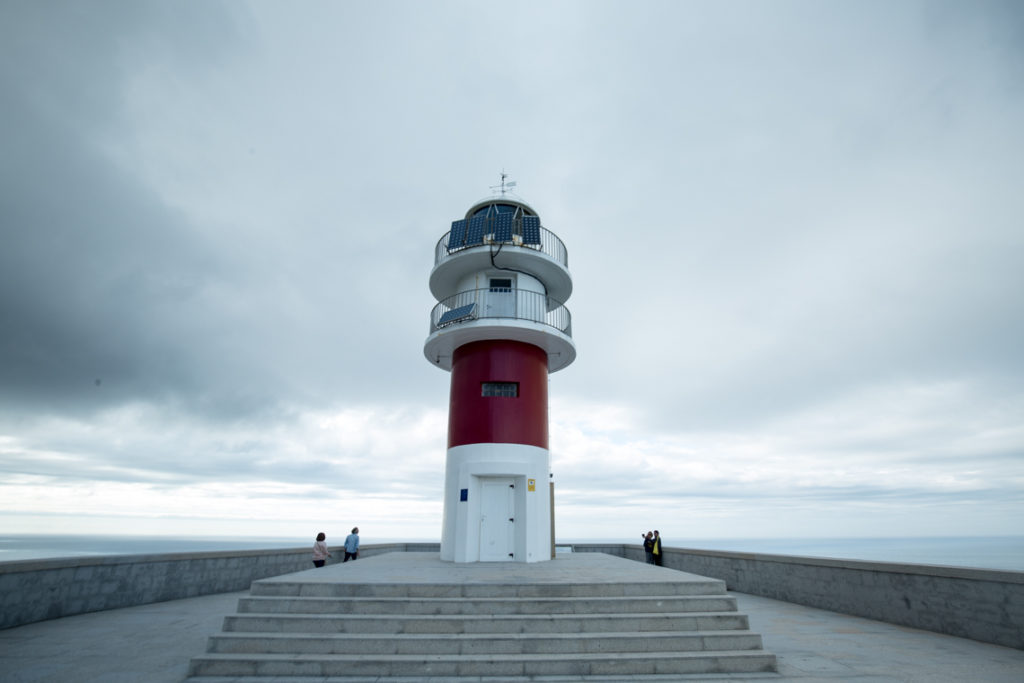
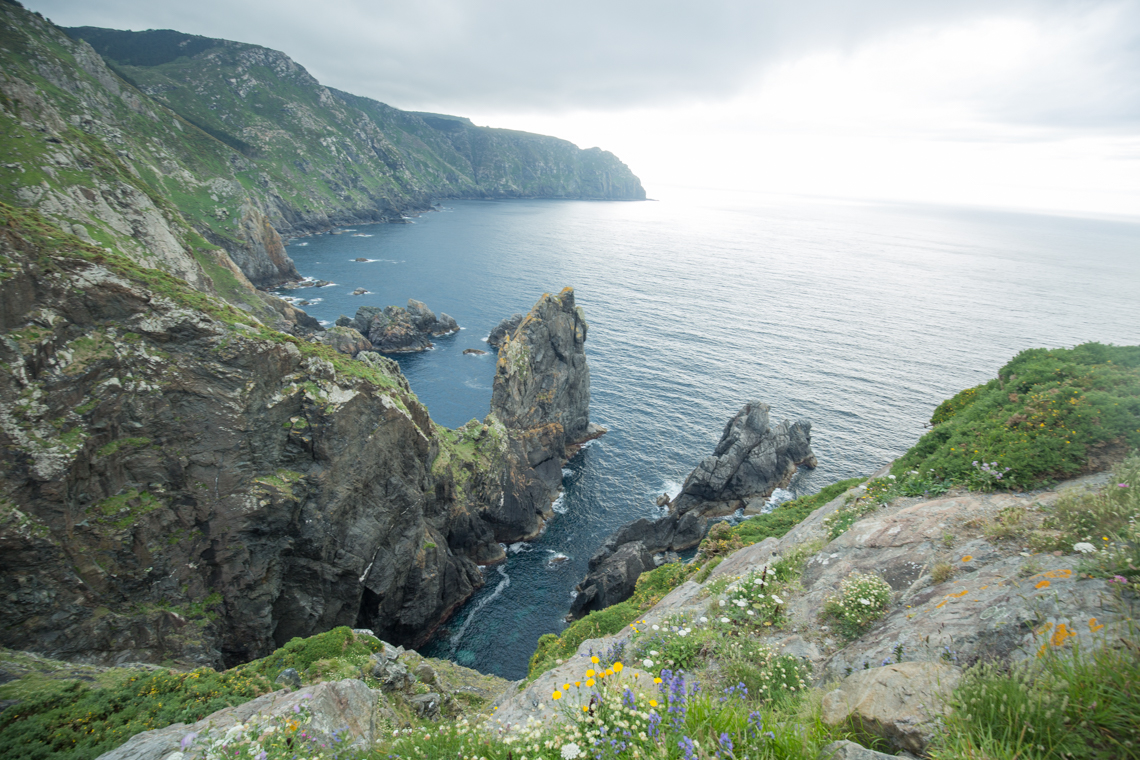
I spent some time walking around the lighthouse taking in the view out to sea, snapping photos and admiring the lighthouse. There’s plenty of parking space, just remember to take a warm jumper to combat the winds!
At first when we arrived at El castaño dormilón (the sleepy chestnut tree) I thought we were lost. In the middle of nowhere and surrounded by forest this lovely little hotel nestles into its surroundings perfectly. There’s been so much care put into building and designing the interior of the hotel that it left me pondering the decor of my own London flat. The hotel used to be a school but has been developed carefully, keeping many of the original features. The roof beams of the building were restored and reused when it was developed.
There’s lovely touches such as windows at eye level when your lying in bed, you get a superb view of the forest beyond. The owners are super friendly and the quality of their evening dining was really superb. If you’re visiting the area, it’s a great place to stay.
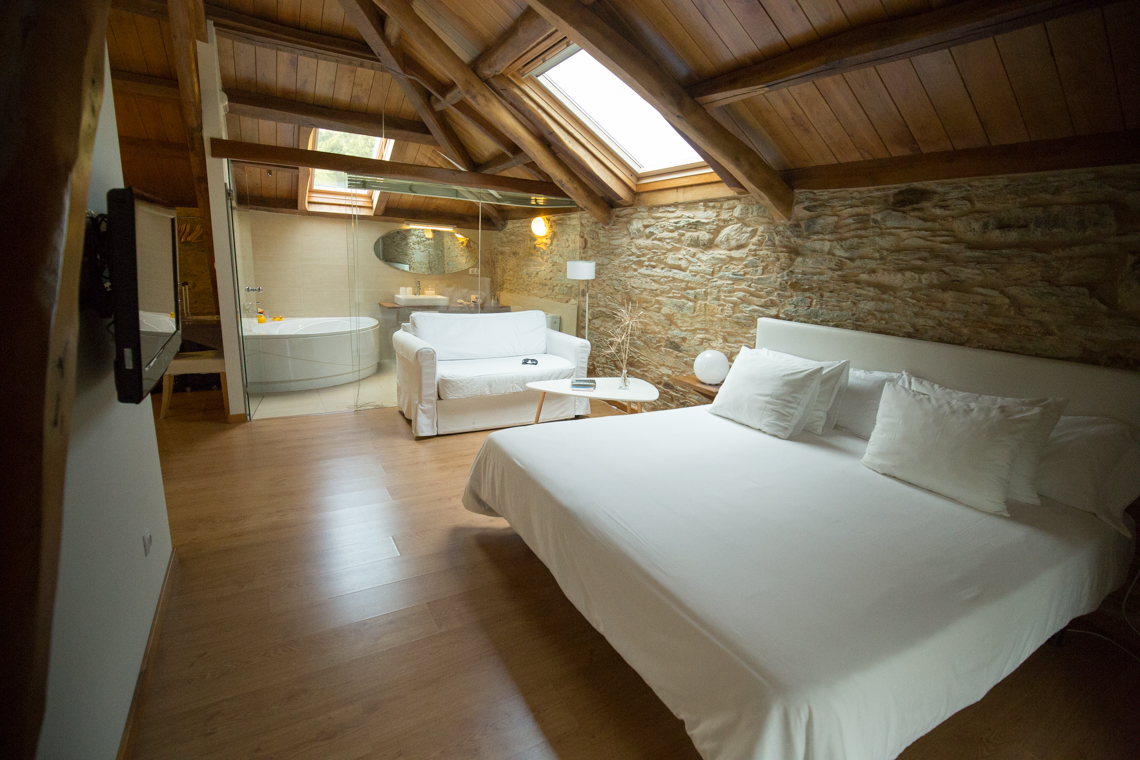
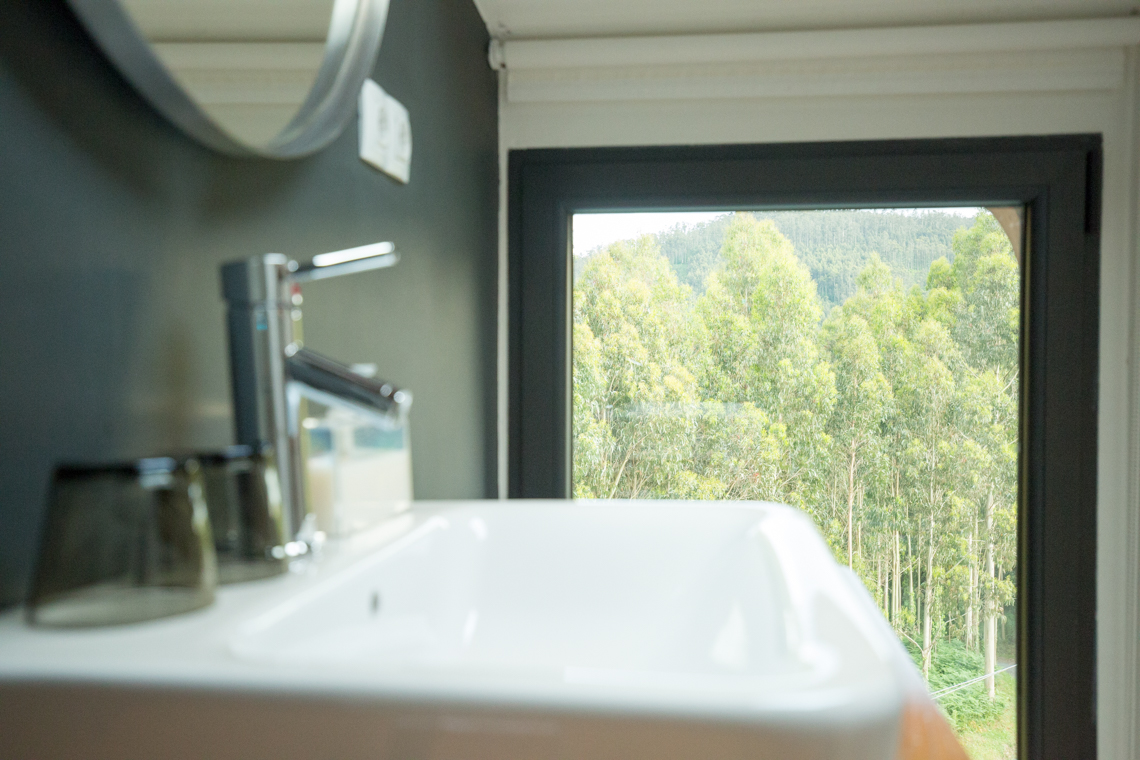
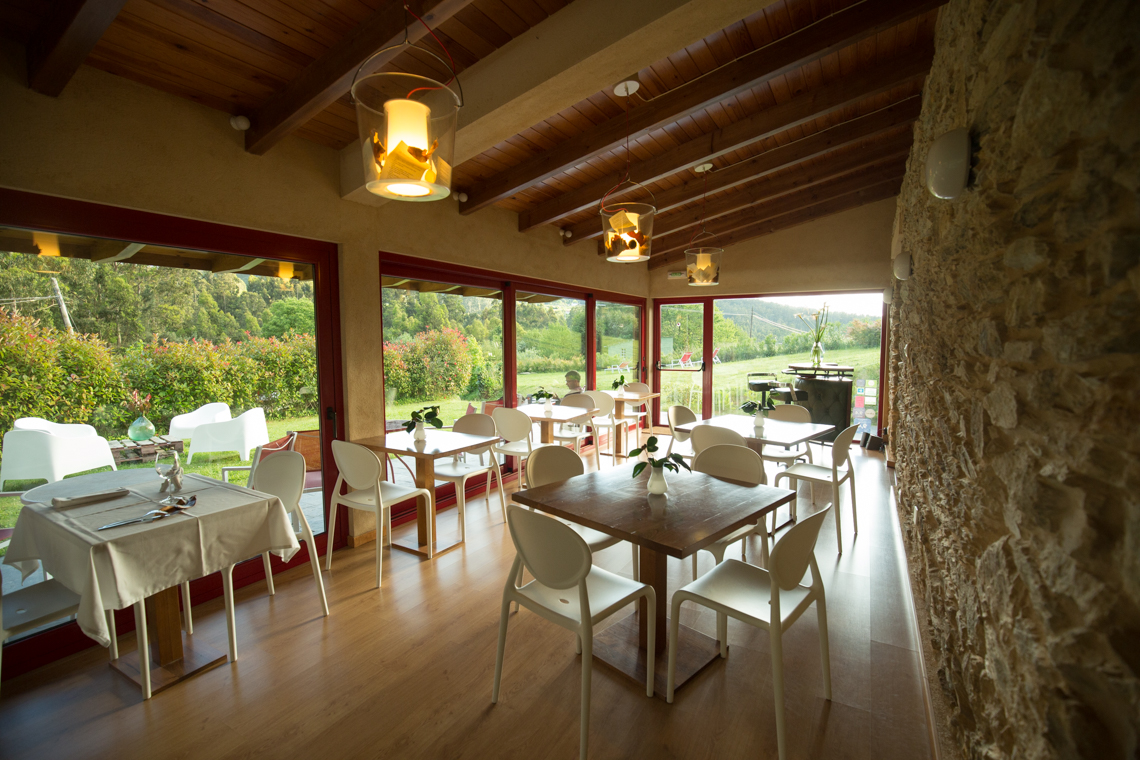
Day 3
Porto do Barqueiro is a tiny picture postcard fishing village with colourful houses dotted around the hillside. Around the port you’ll find storage buildings housing fishing equipment, you can find the nets and stacks of fishing baskets. Although there isn’t a huge amount to do here, it’s quiet and reminiscent of a Norwegian fishing village.
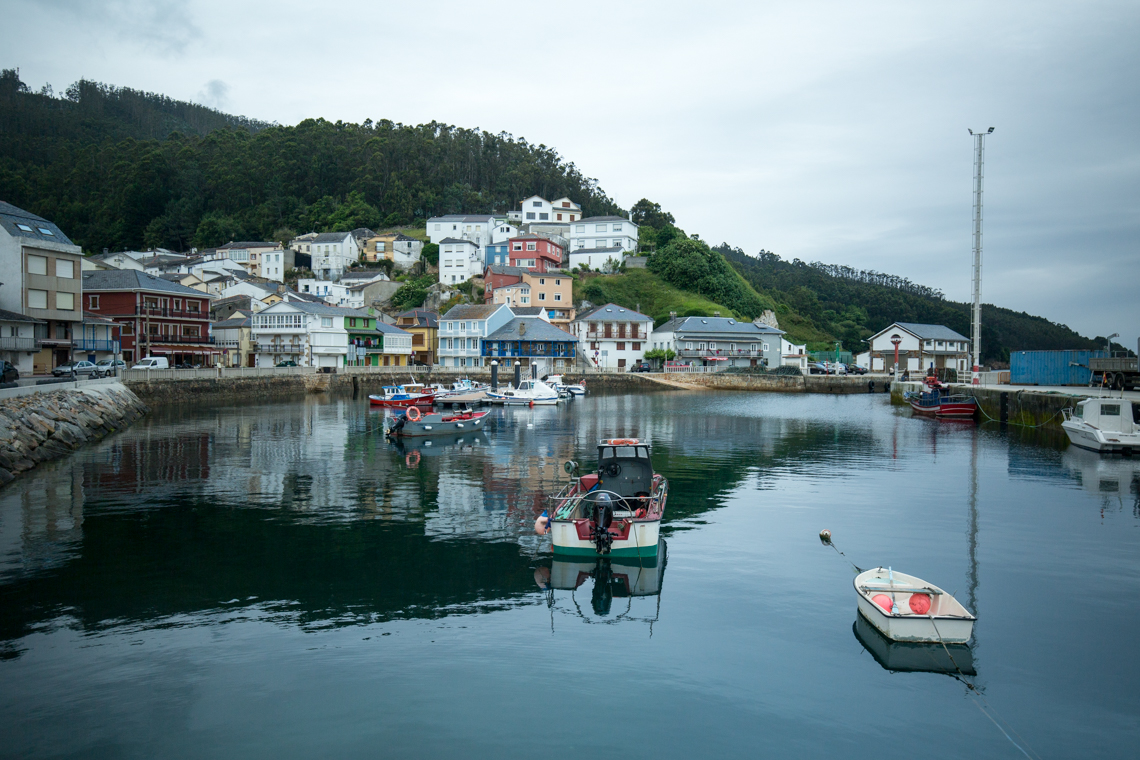
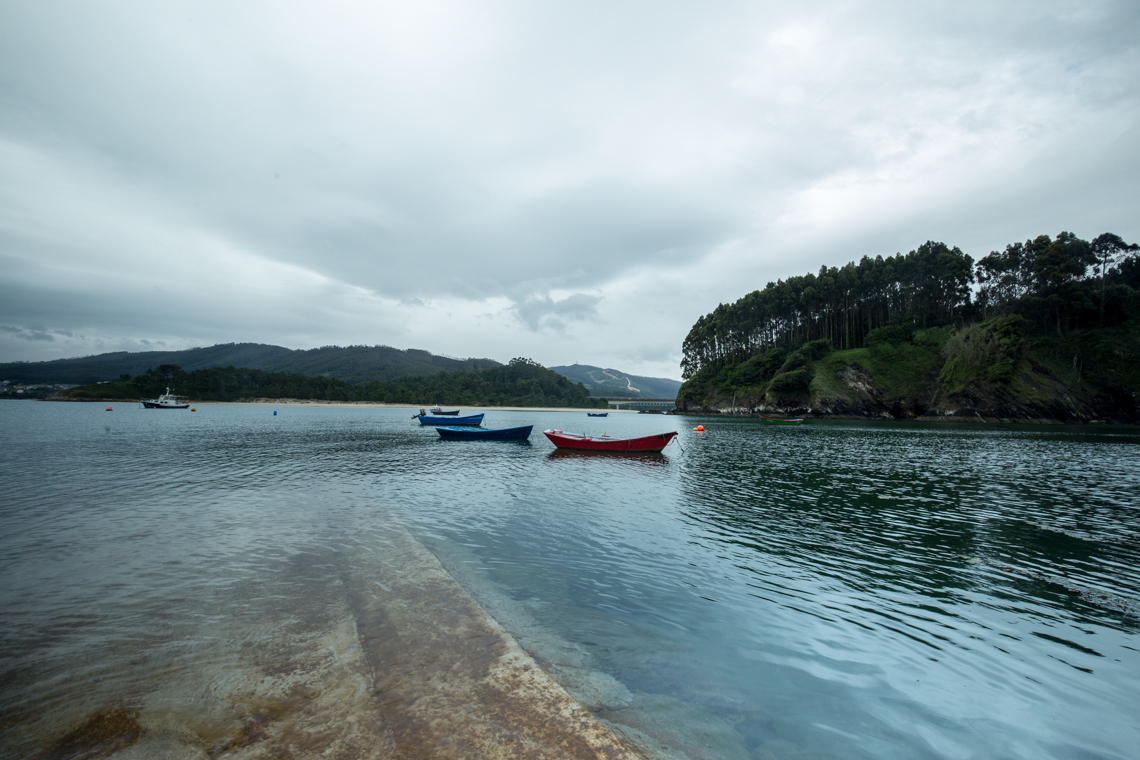
Viveiro sits at the mouth of the Río Landro and boast a historic quarter that’s been quite well preserved over the years. Pass under the old city wall gate and into the old quarter with stone buildings and stone covered streets, there’s plenty to discover here and worth taking a good couple of hours at least to explore.
![]() 16 Iglesia Santa María do Campo
16 Iglesia Santa María do Campo
This 12th century Romanesque church is Viveiro’s oldest and it towers above the street below with its sand coloured stone brickwork. The exact date of the church’s construction is unknown.
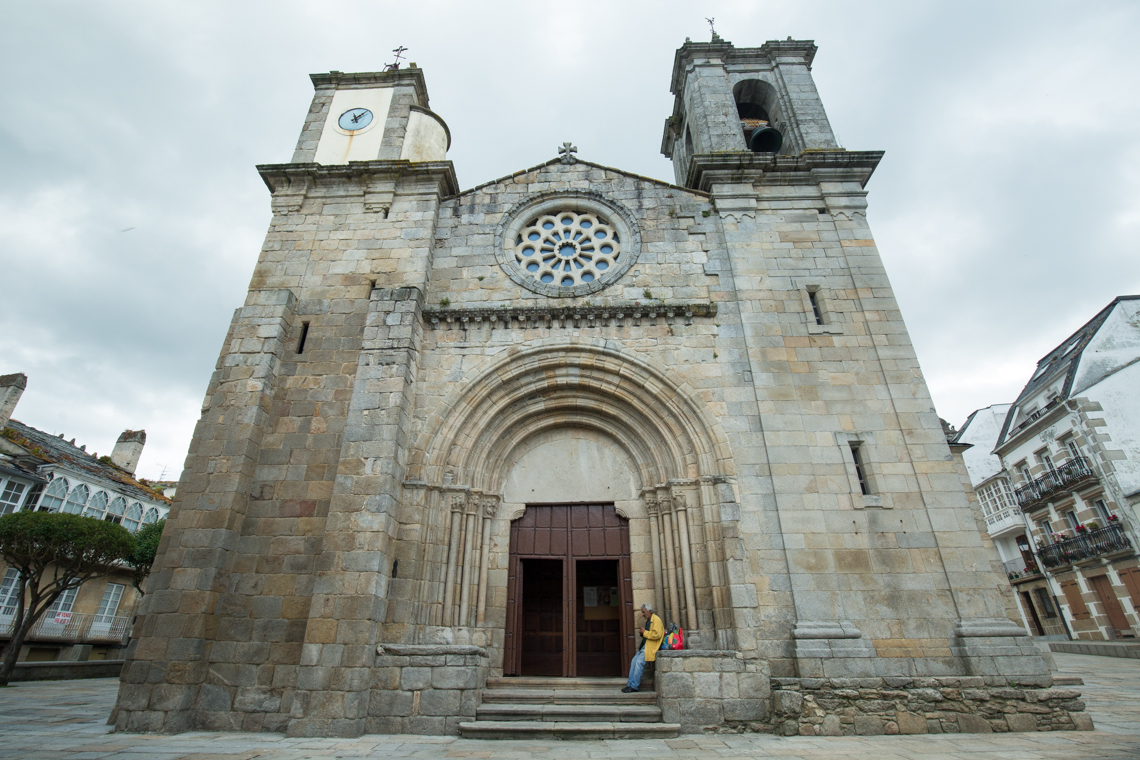
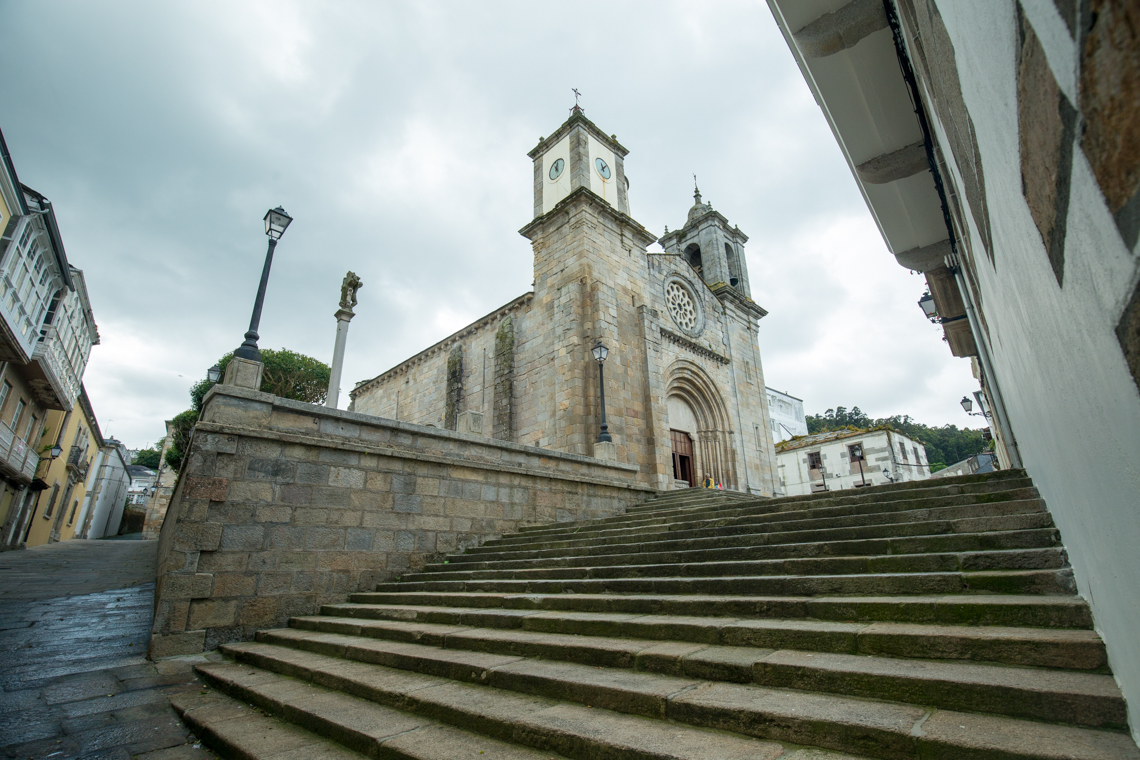
We found a cafe/tapas bar in Praza Maior to rest our legs after walking around Viveiro’s old town. Thankfully our cafe con leche came with free churros, exactly what we needed to boost our energy levels.
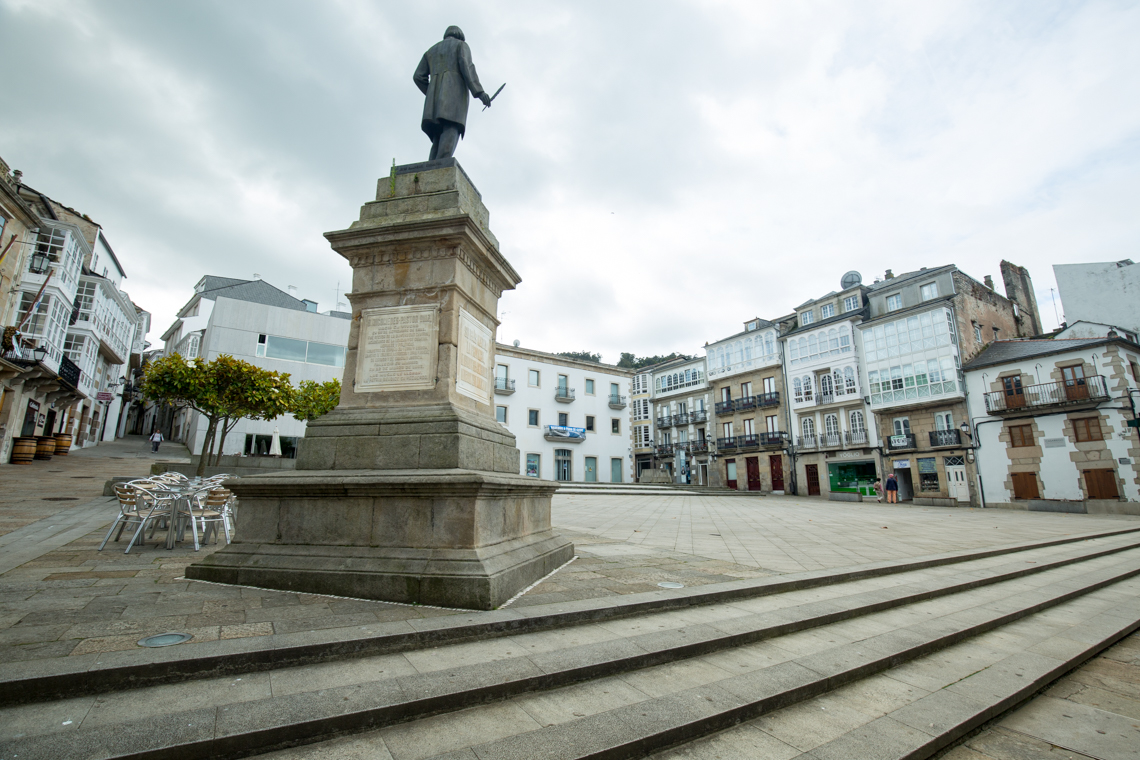
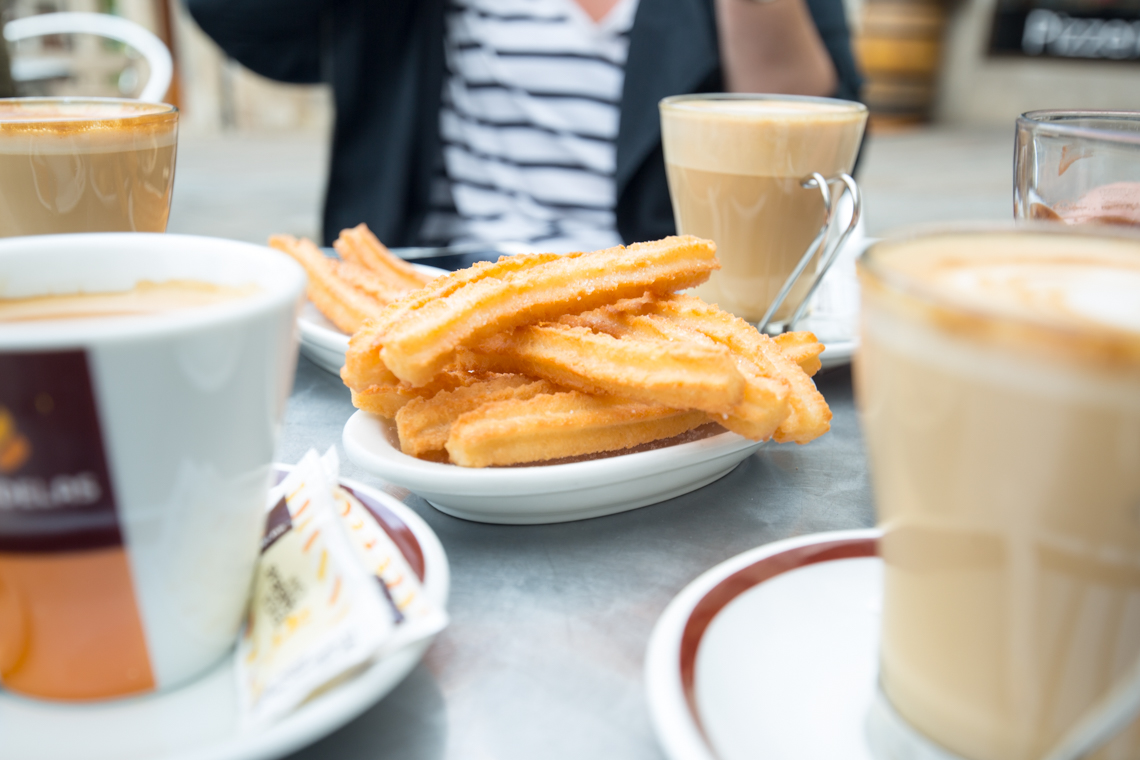
In order to really appreciate Viverio and its surroundings, you need to get up high… way high. At the tiny church, Capilla De San Roque there is a breathtaking view of Viveiro, the river Río Landro and out to sea.
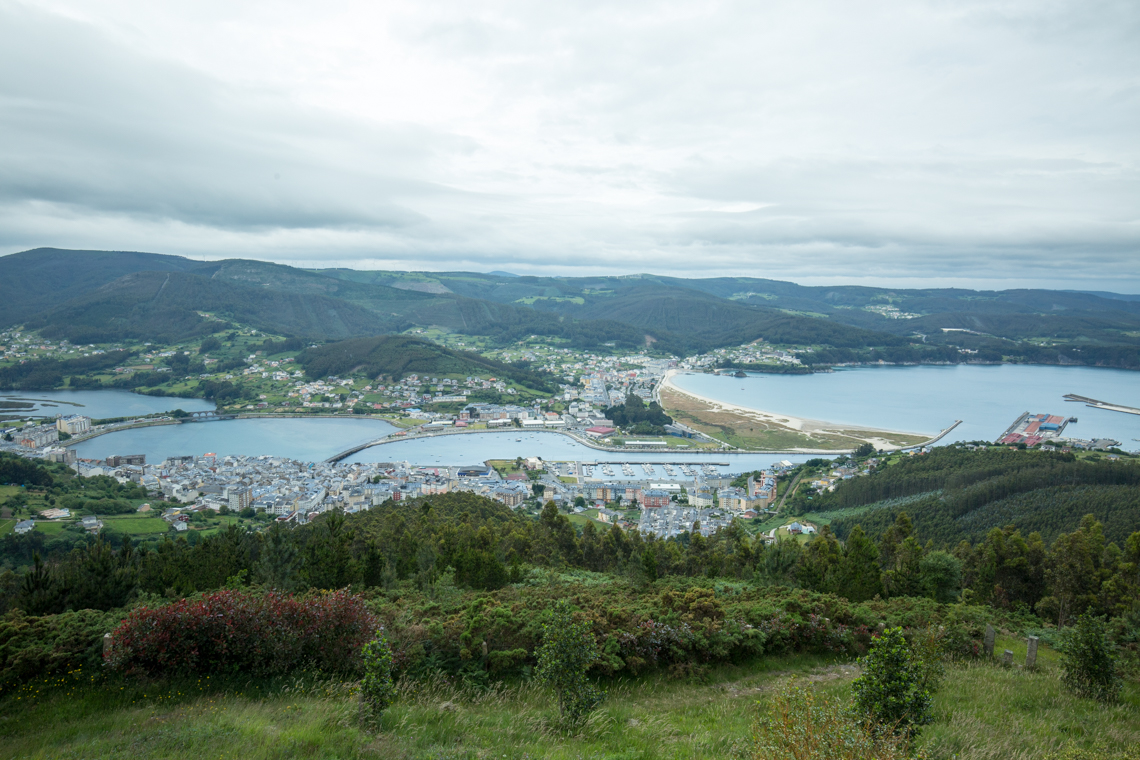
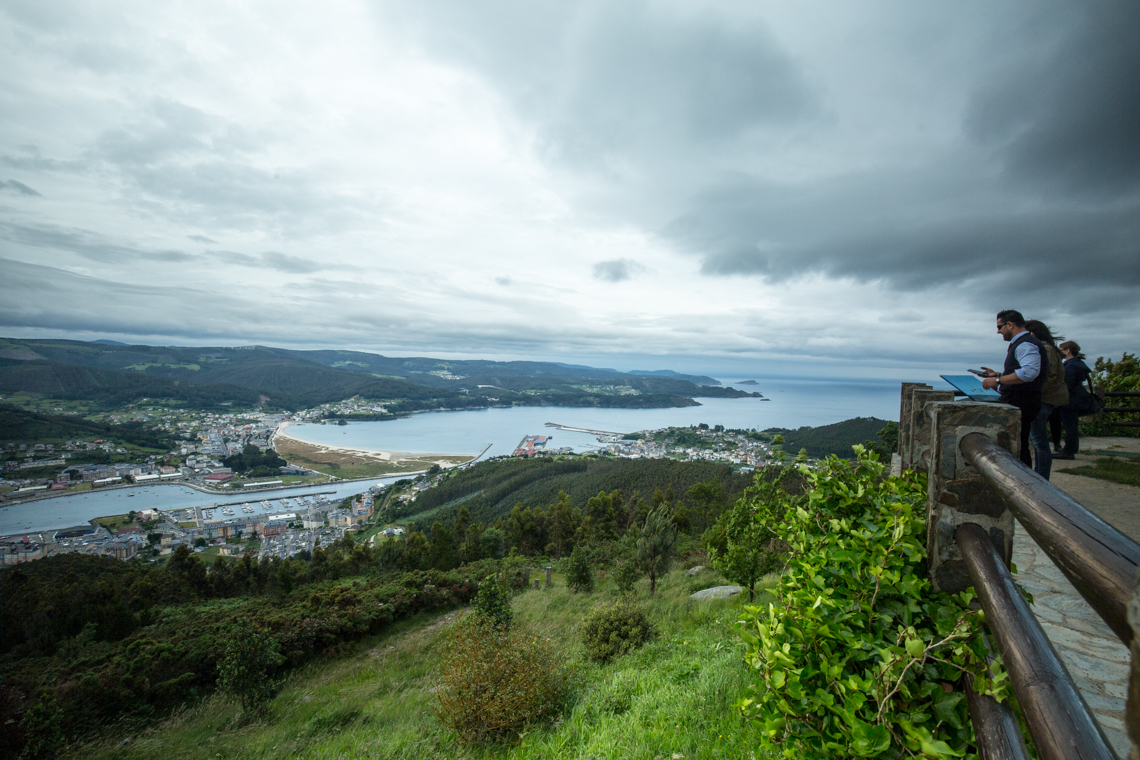
Like Faro de Cabo Ortegal, this lighthouse was built in 1984, as were many others on this coastal stretch in order to help protect ships in the estuary of Vivero. It’s 80 metres tall and protrudes from the mainland from rocky cliffs.
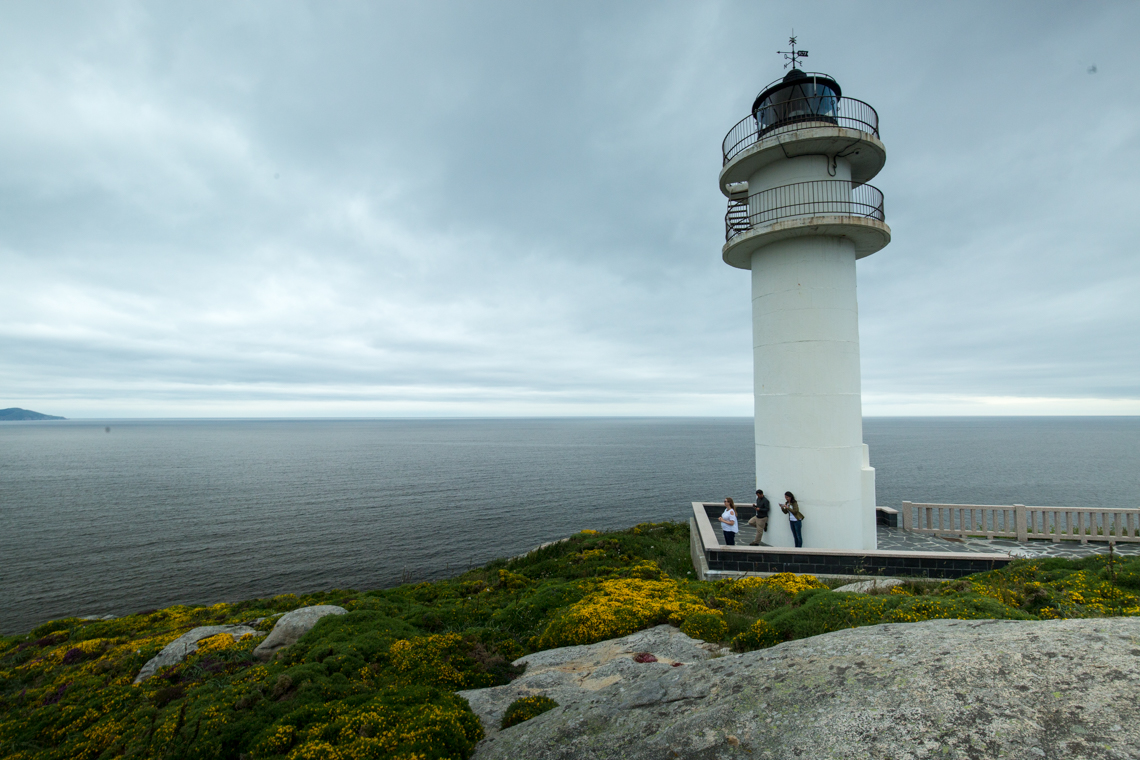
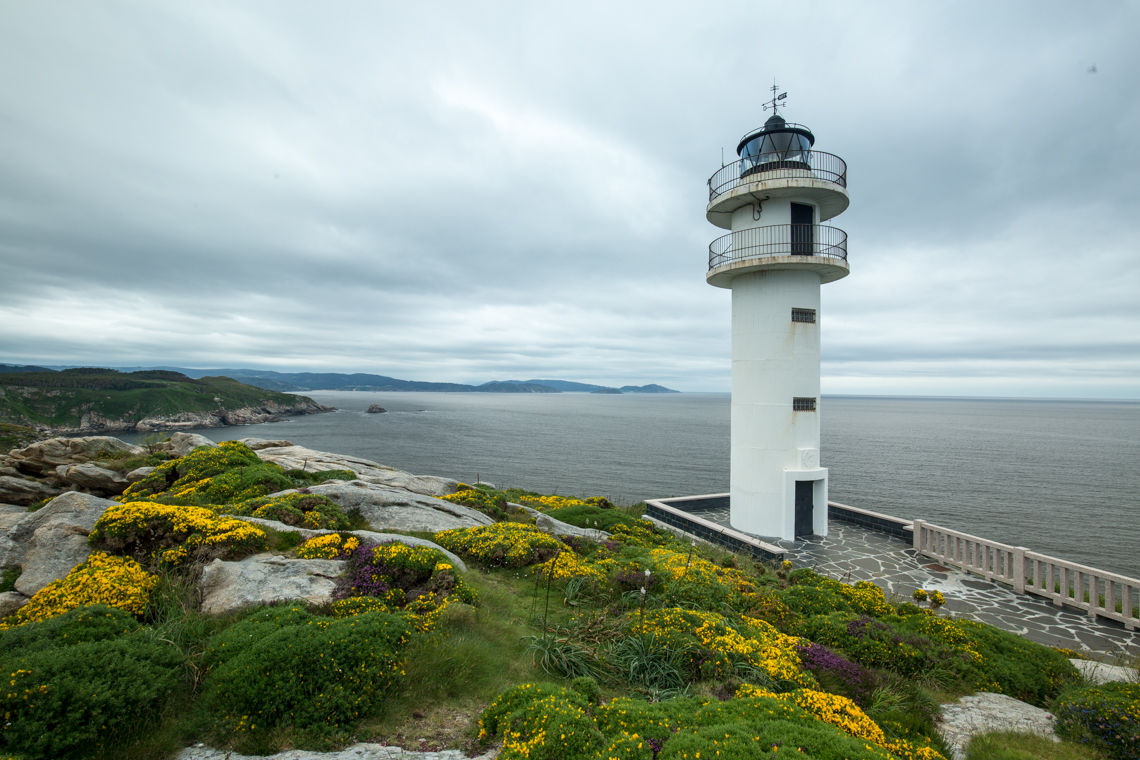
![]() 12 Fabrica De Ceramica De Sargadelos
12 Fabrica De Ceramica De Sargadelos
Probably one of the surprises of our trip, we stopped off at Fabrica De Ceramica De Sargadelos, a ceramics factory and shop that has a rich history in Galicia. The first factory was first setup in the nineteenth century by Antonio Raimundo Ibáñez in Sargadelos. Their hand painted blue designs are easily recognisable and you’ll find the pottery being use in restaurants and hotels all over the region.
We had the chance to see the ruins of the old ceramics factory that’s now mostly covered in grass, but some buildings still stand and you can make out where the old furnaces used to be.
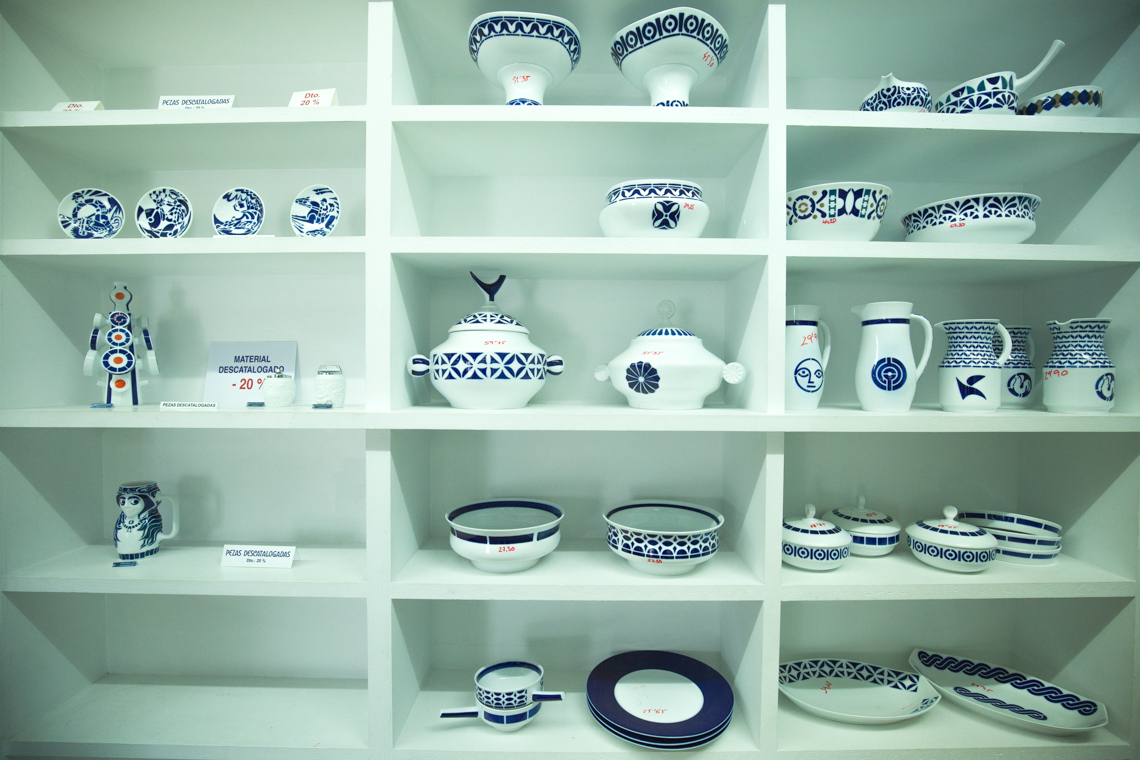

Another gem of a hotel and restaurant, Casa do Mudo has been restored from an old farm house and sits high up in the rural hills. It has some beautiful thick granite-stoned walls and original exposed wooden beams. Although we didn’t stay the night at Casa do Mudo (would have loved to!) we did have lunch here and a good look around the rooms available.
What was striking from Casa do Mudo was the warm welcome and friendliness, it’s clear that this family run business takes real pride in what they offer.
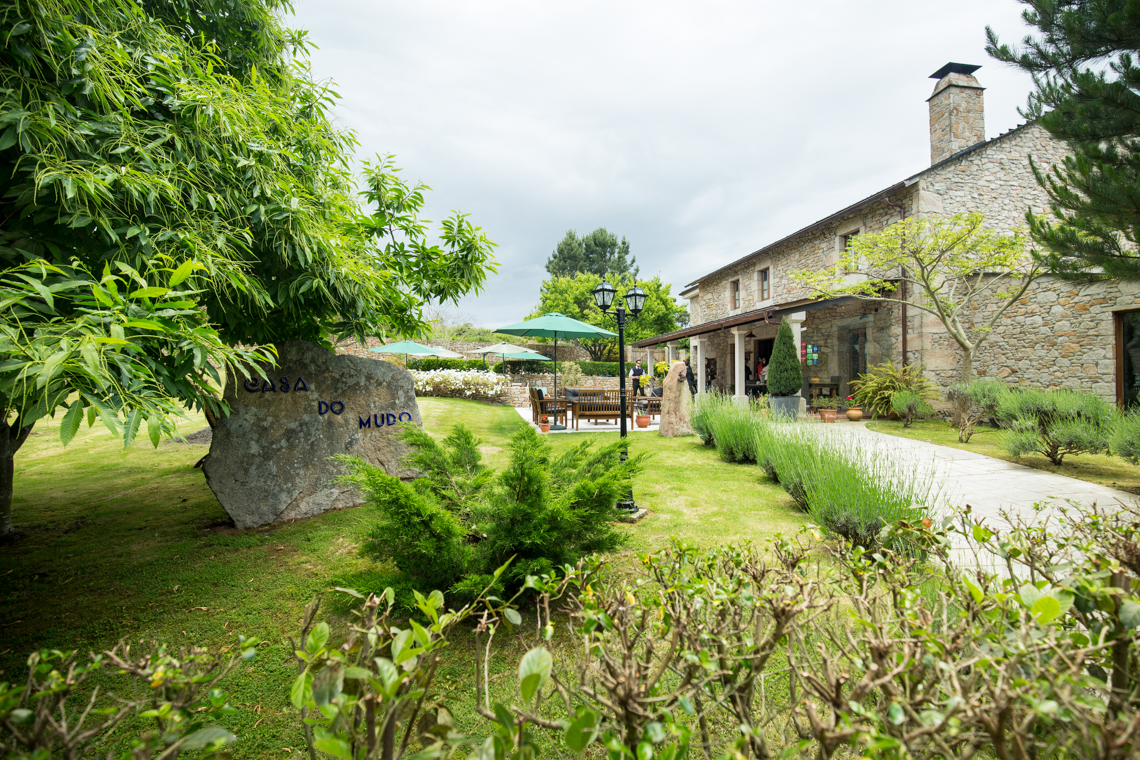
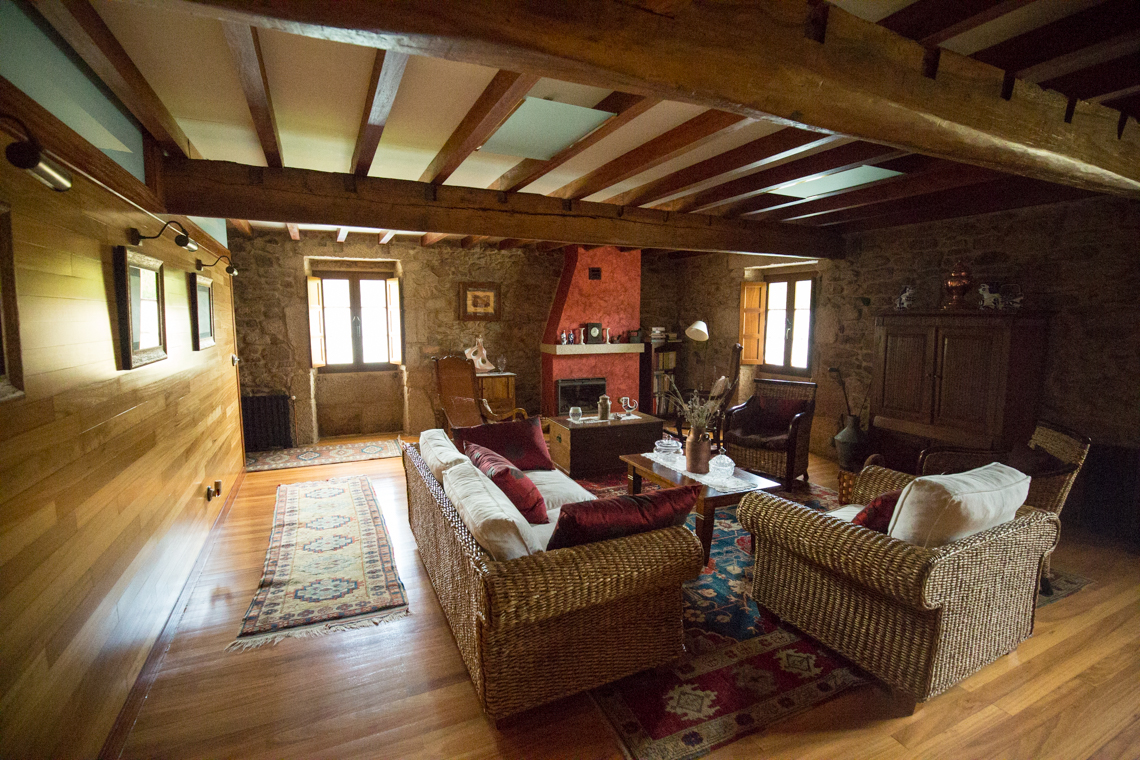
For our lunch, it was lovely to see distinct blue painted plates and bowls from Sargadelos having toured the shop and old factory ruins earlier in the day.
Again, like most of our dining experiences in Galicia, I lost count of the number of courses but my highlights were the flavoursome crab soup and free range chicken. The food is homemade, traditional and there is a lot.. just save some space for the amazing cheesecake. Even though I was completely full, the cheesecake was just so good that I just had to finish it all.
Definitely consider Casa do Mudo as place to stay on your trip in Galicia.
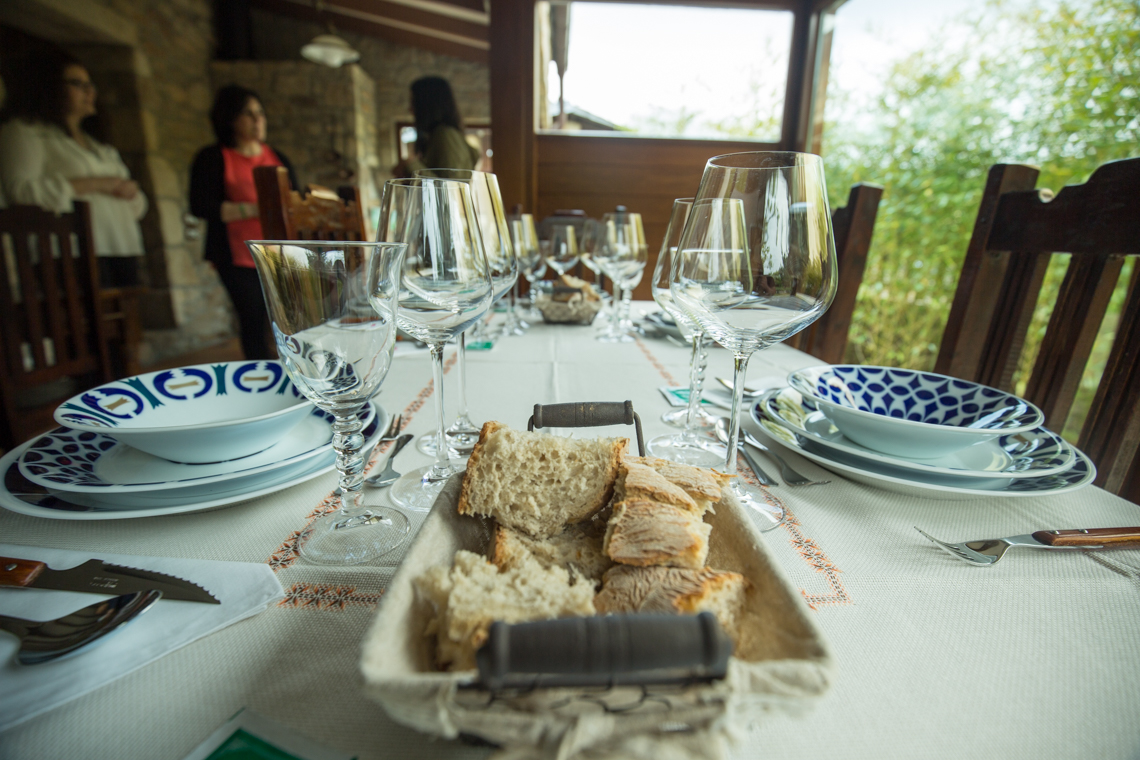
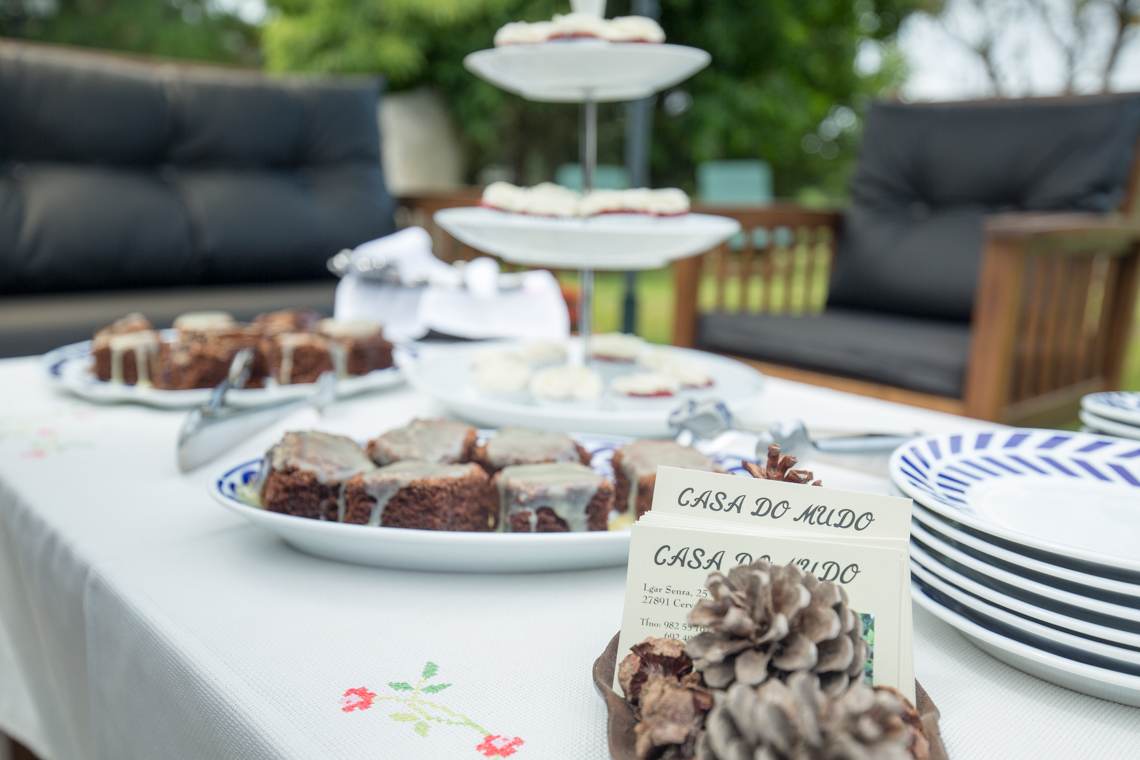
Praia das Catedrais or “Beach of the Cathedrals” is a beach featuring numerous natural arch rock formations and caves that are revealed at low tide. It’s a spectacular example of the power and force of the sea. Theses huge cathedral like arches have been carved out of the rock over many years from the tides of the Atlantic sea.
Some of these magnificent arches are as tall as 30 metres high and you can walk the sandy beach beneath them when the tide is out. The most spectacular arches you’ll find down towards the east side of the beach where the tide comes in first. You can also explore the deep eroded caves and crevices or even just sunbath on the beach.
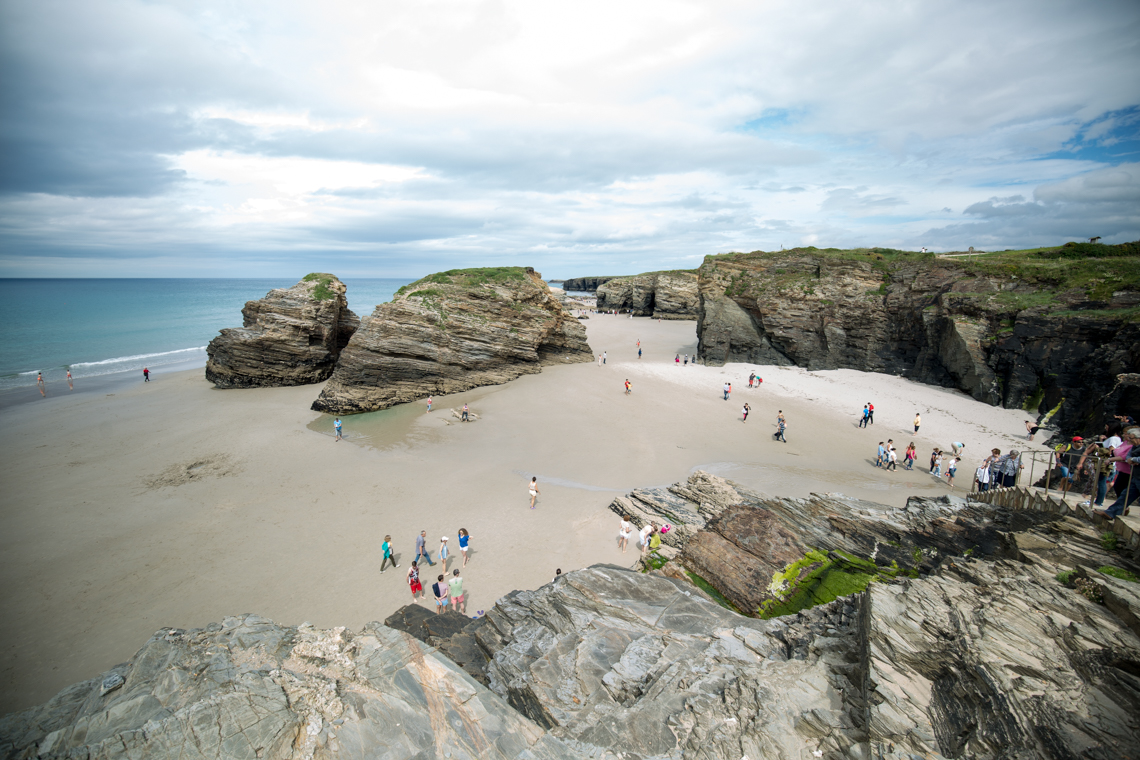
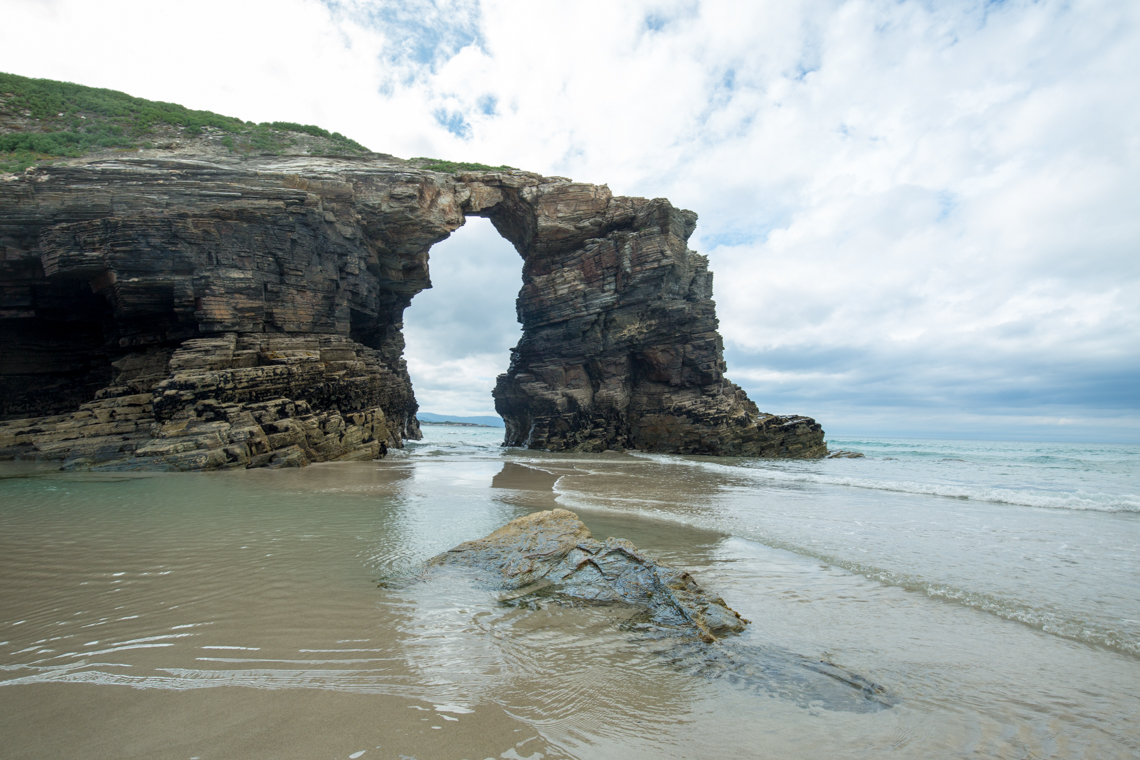
We visited the beach at low tide but it’s worth scheduling your trip so that you can see the view over the cliffs here at high tide too for a different perspective. Make sure you check the tide tables online will be before you visit.
The beach can be quiet busy during peak season, so don’t expect it to be on your own.
Entrance tickets are also required to visit in order to preserve and protect the area, you can book them from the official website here.
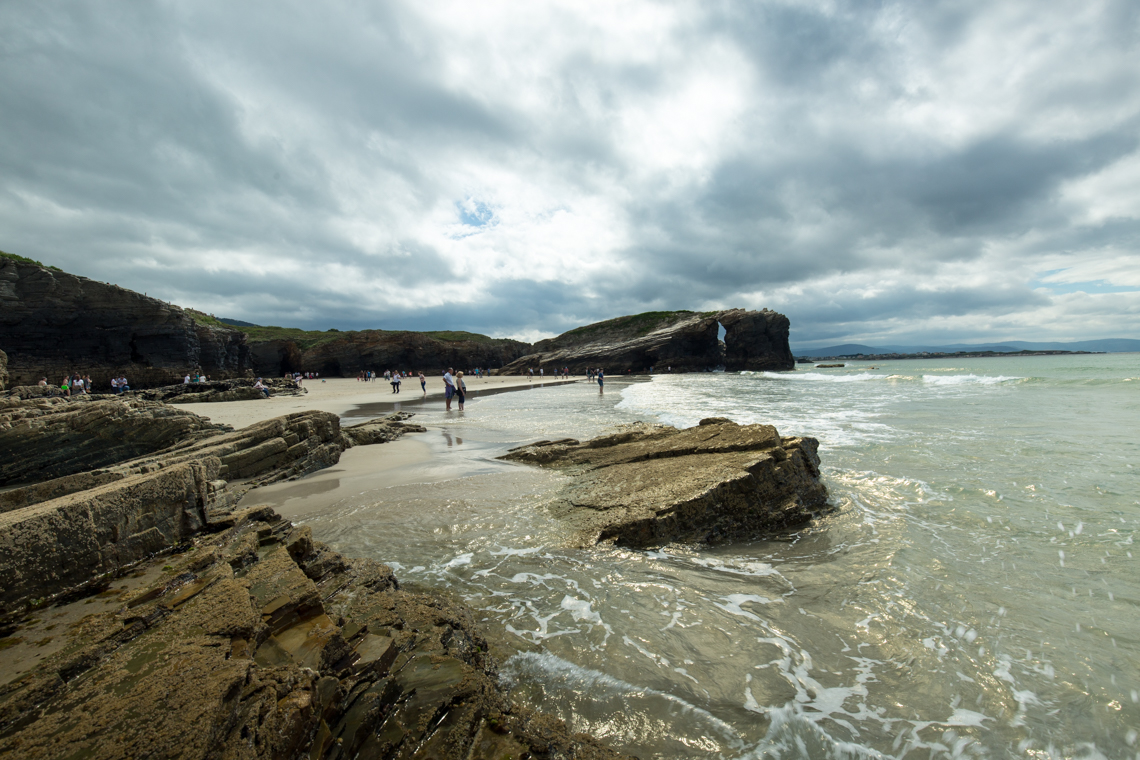
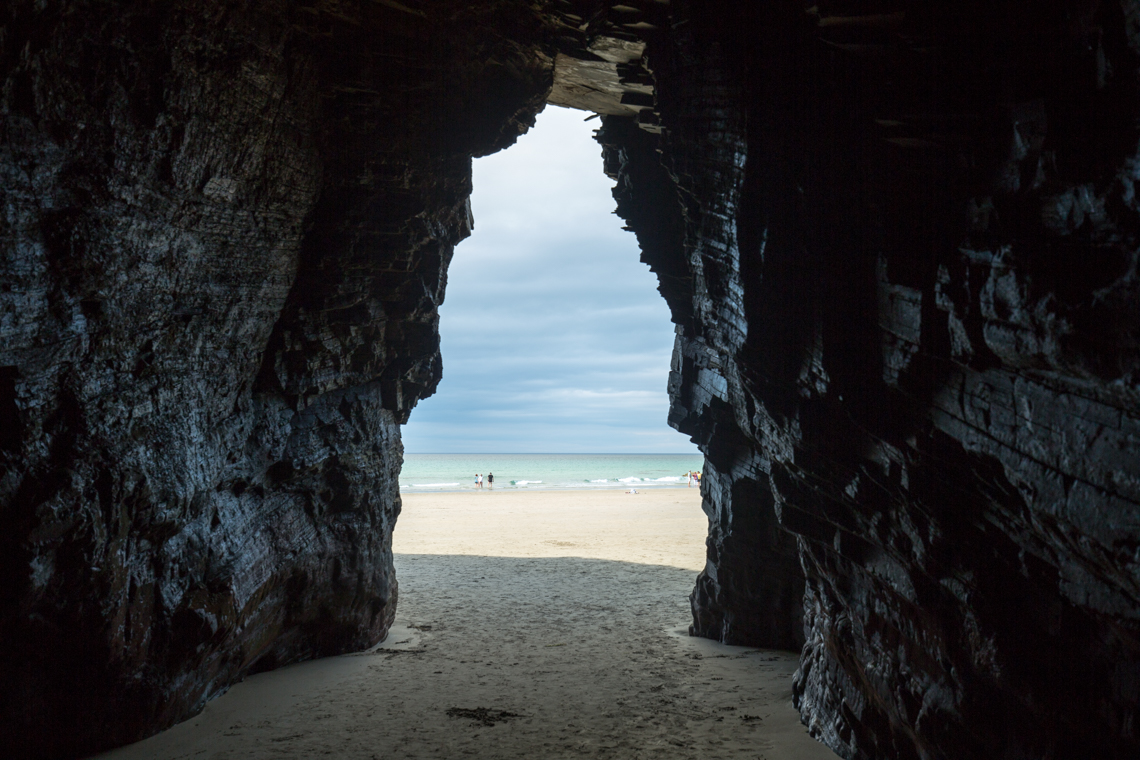
Not too far from the Beach of Cathedrals, this island with its very only lighthouse is a beautiful sight. If you have time you can actually walk around the island itself with 360 degree views out to the Cantabrian Sea.
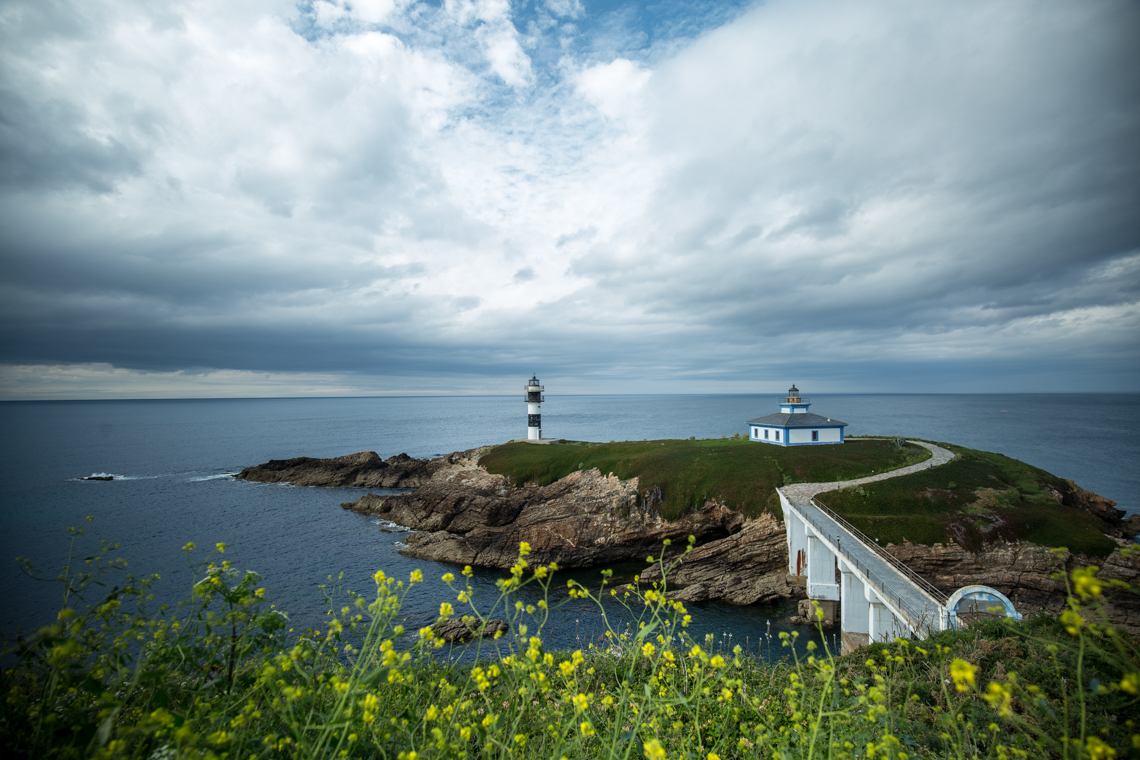
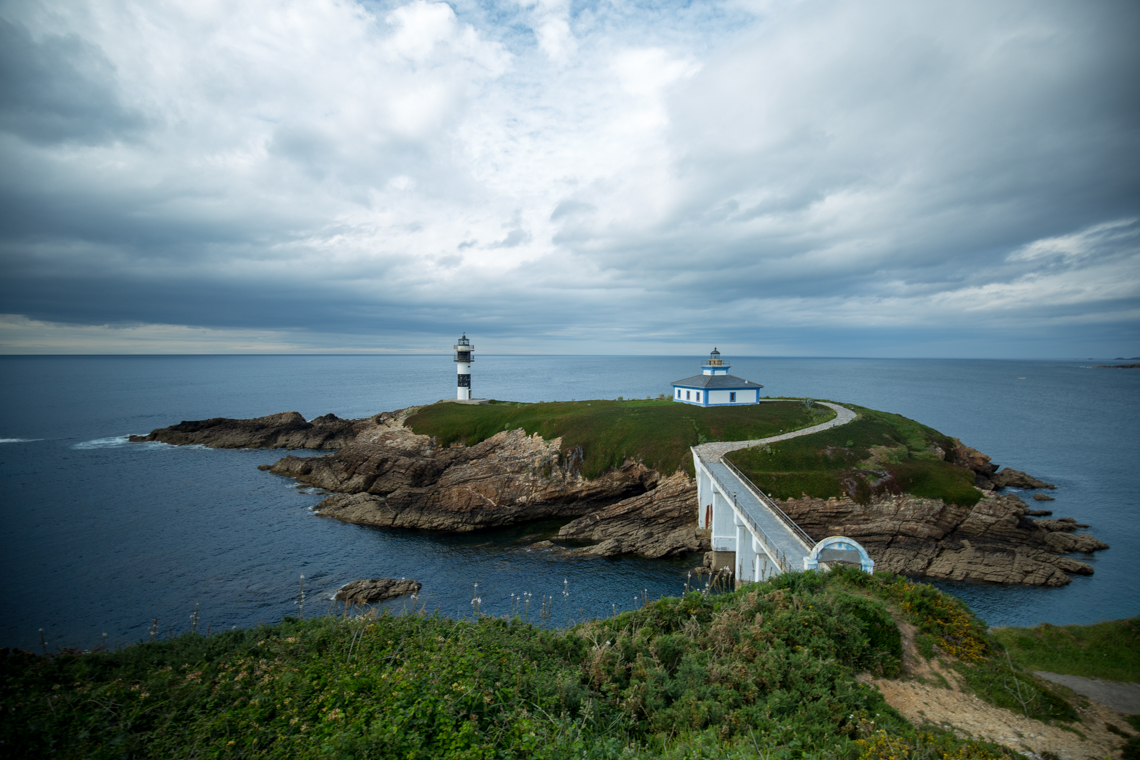
Arriving in Ribadeo, on the far Eastern border of Galicia we checked into Parador de Ribadeo. This hotel has large spacious rooms and a good breakfast, my room also looked out onto the Ribadeo estuary from its galeria (indoor balcony).
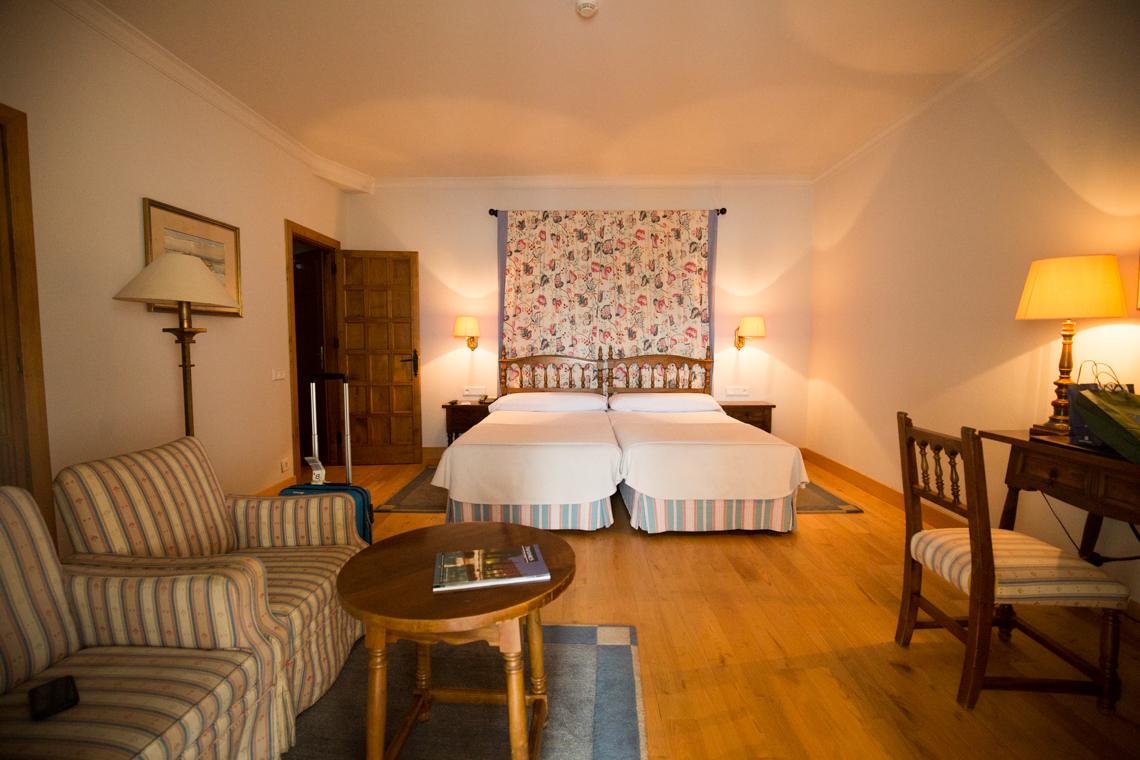
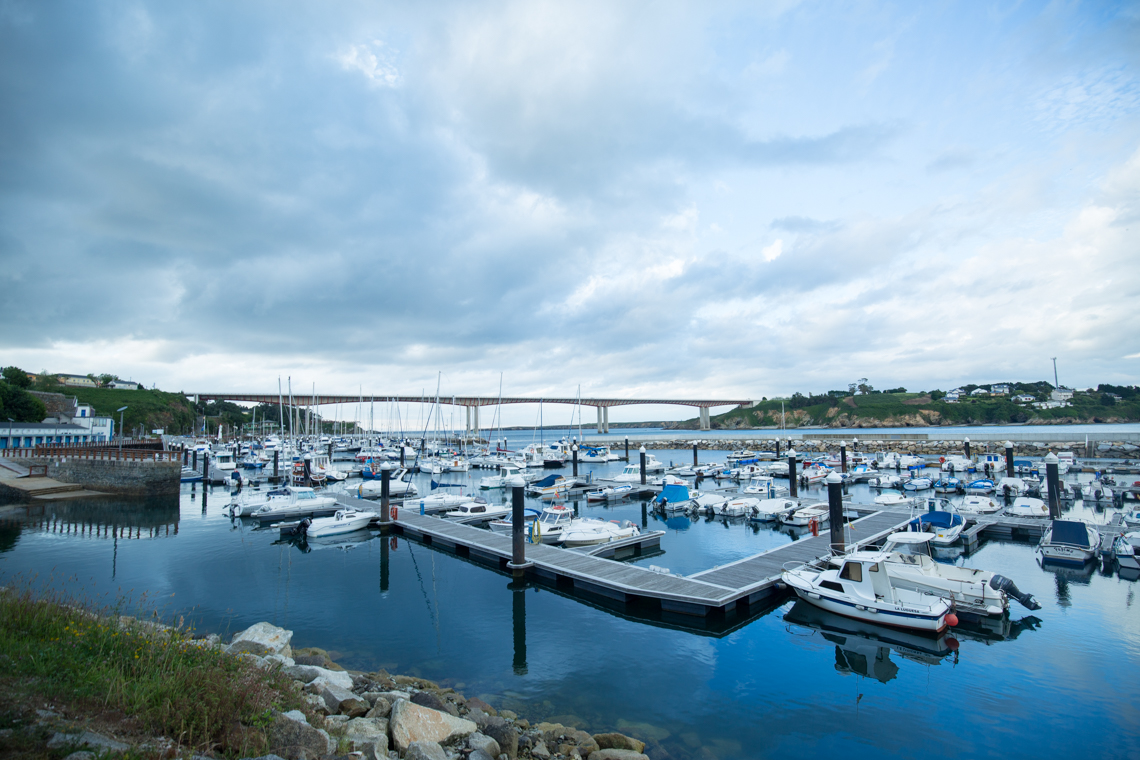
We didn’t spend all that long in Ribadeo, but it is well positions for trips to the Beach of Cathedrals and the Pancha Island and lighthouse (Faro de Illa Pancha).
We took an evening stroll across town and down to the marina for dinner. The port is quiet beautiful with views out into the estuary, there are a few bars and restaurants scattered around this area too if you’re looking for an evening drink or tapas.
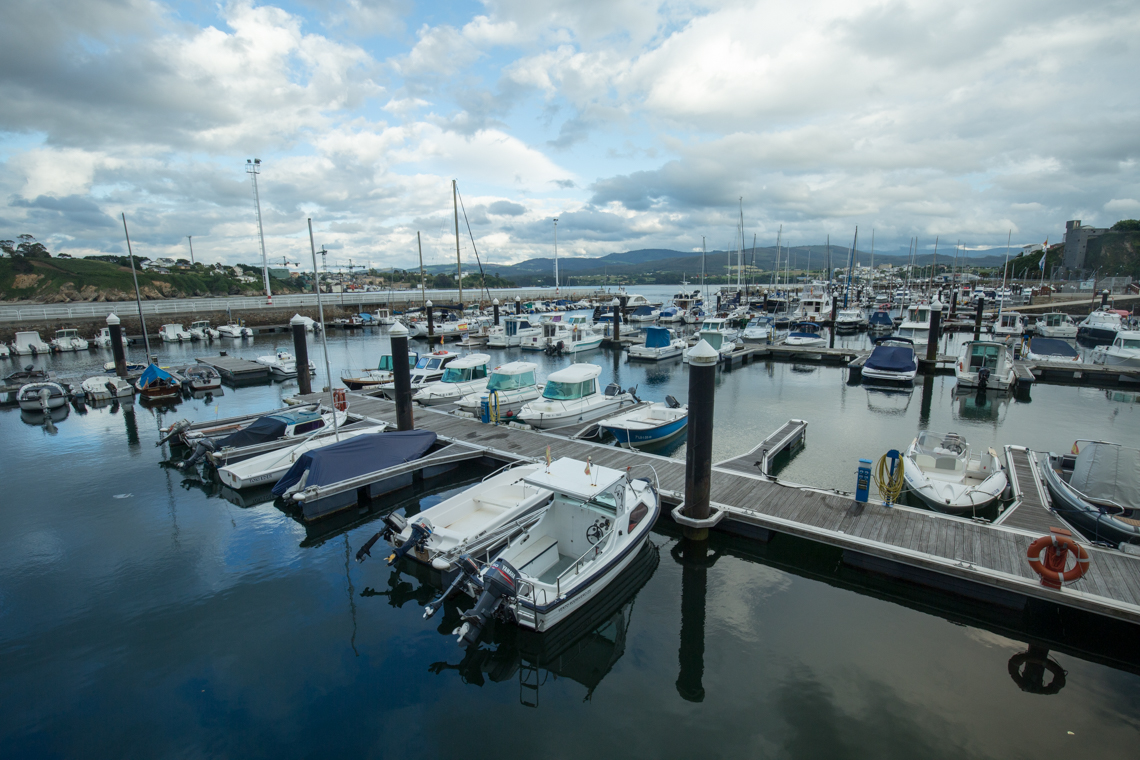
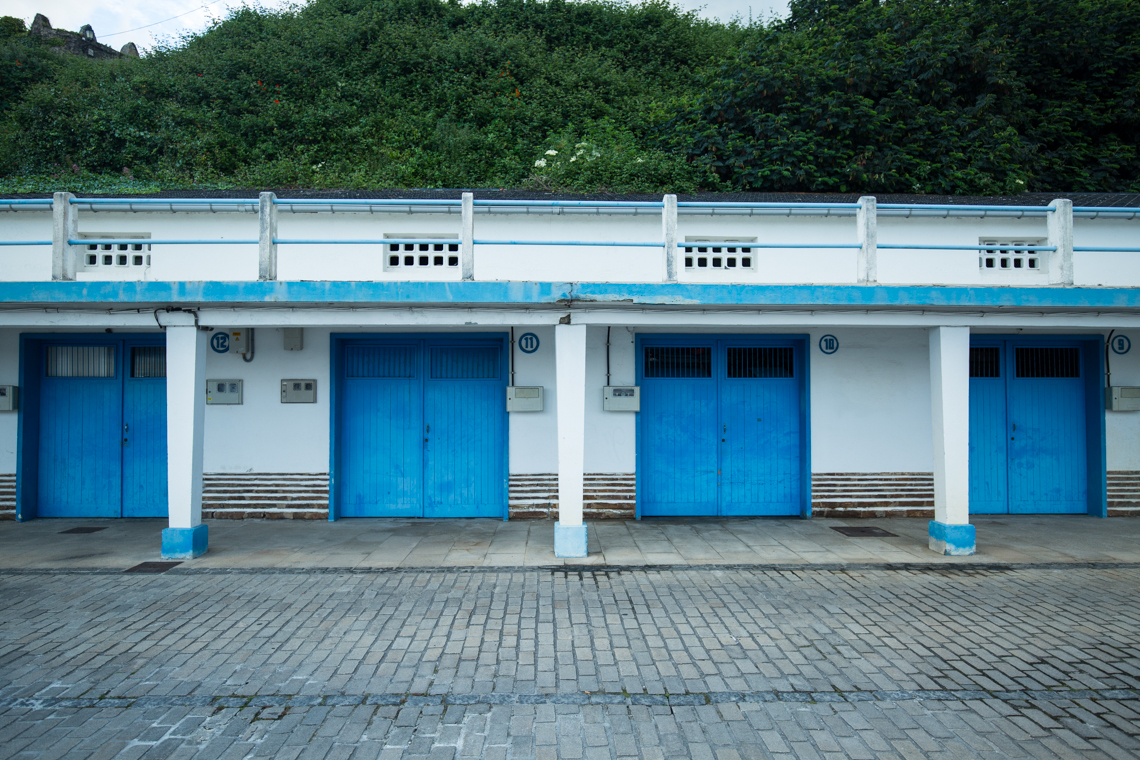
San Miguel is a lovely restaurant down on Ribadeo’s Marina with the backdrop of a huge bridge that spans the Ribadeo estuary to Galicia’s neighbouring region, Asturias. You’re likely to head across this bridge in your going onward to Asturias airport rather than returning to La Coruña. Inside the restaurant there’s wall to wall windows in the main dining area giving you great views out over the water.
By now I was braced for dining in Galicia… dish after dish after dish. I knew I had to slow down on the bread and take my time and not eating too much of the shared courses. The service a San Miguel was superb, friendly yet extremely attentive. My favourite dishes were the octopus and sardine, you simply can’t go wrong with the fresh seafood in Galicia.
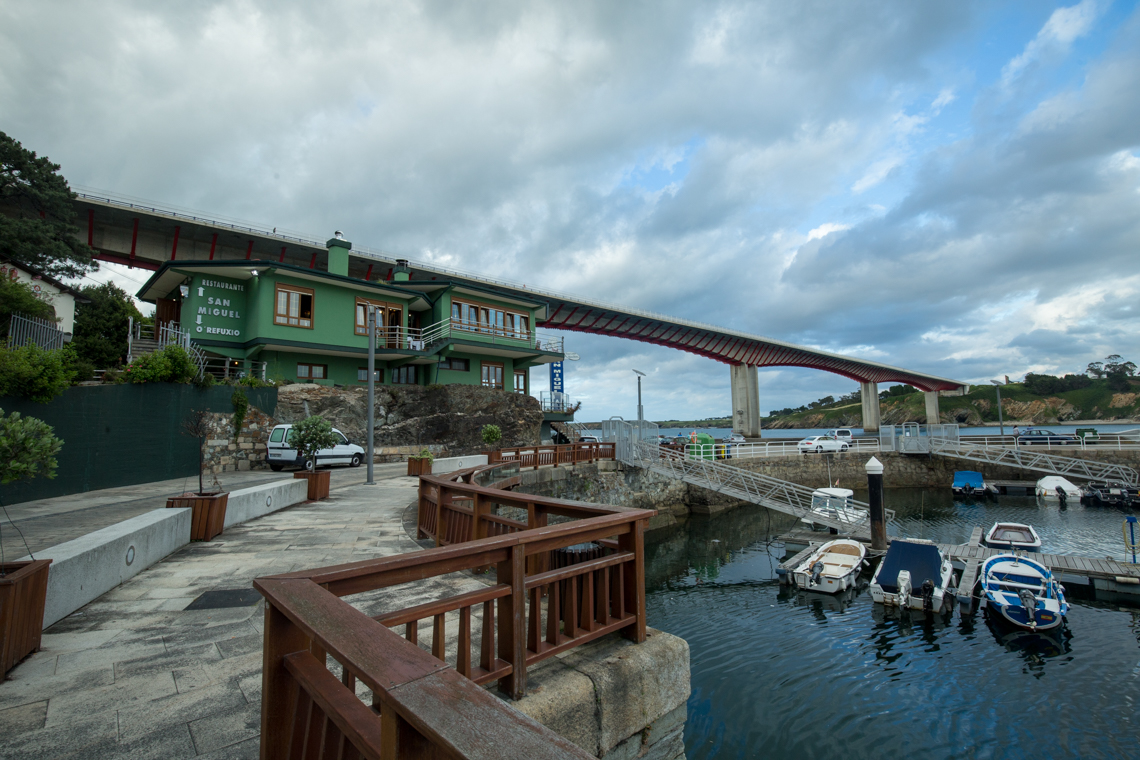
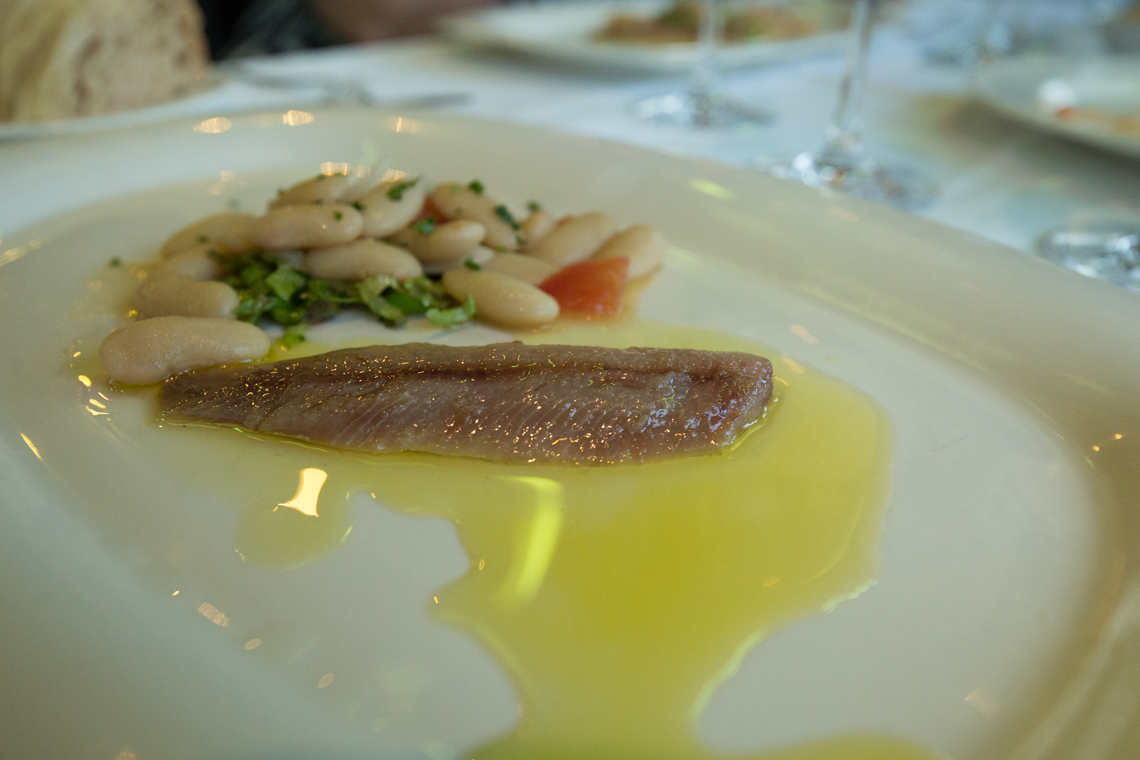
Day 4
Note: We arrived back in La Coruña with time for some more sight seeing before catching our flight back to London.
Torre de Hércules (Tower of Hercules) is an ancient Roman lighthouse at the entrance of La Coruña harbour and is the oldest Roman lighthouse in use today. In 2009 it was recognised as a UNESCO World Heritage Site and rightly so, it’s a fascinating structure.
The core of the lighthouse is Roman and the outer is part of architect Eustaquio Giannini’s restoration from the 18th century. In the 1990’s excavations took place and the original Roman foundation were discovered. Inside the lighthouse you can read all about the history of the lighthouse and view the original contraption that held the towers light.
Before climbing the stairs to the top you’ll see Roman foundations and the 18th century outer wall. From the top of the lighthouse you can lovely view of the coastline, La Coruña harbour and the city itself. It quite windy as you’d expect at the top but well worth the climb.
It costs around 3 euros to make the climb up the narrow winding stairs and a total of 234 steps to the top.
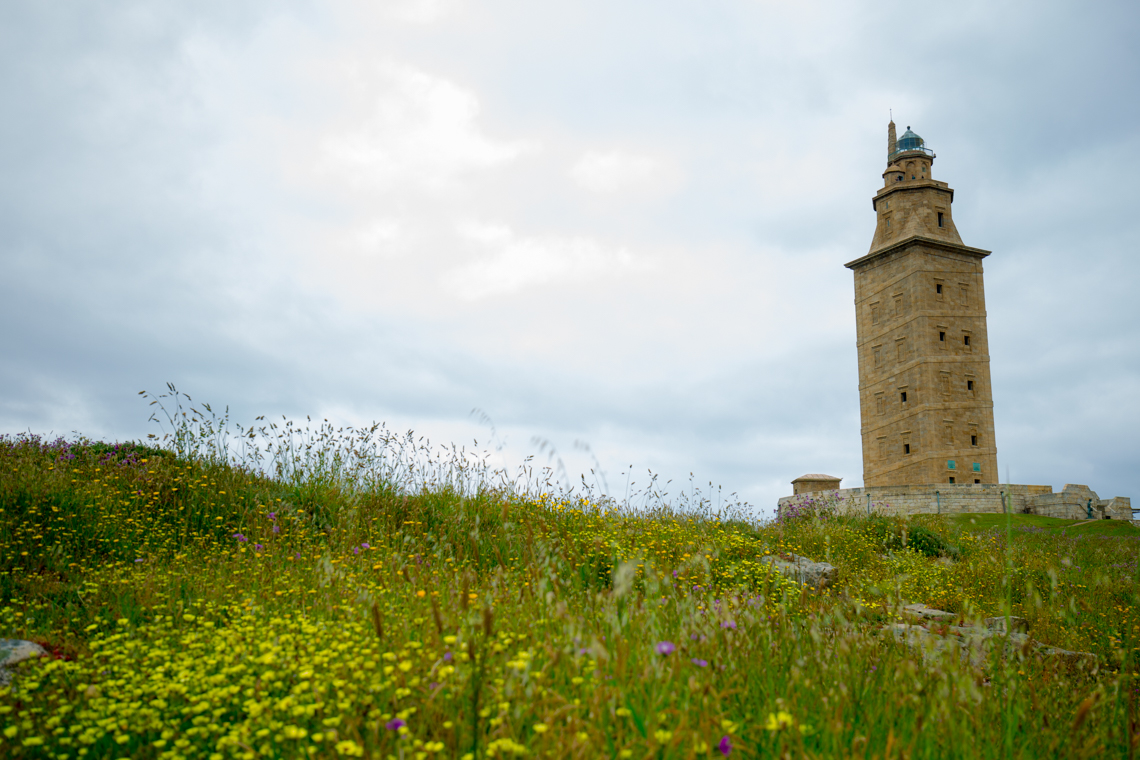
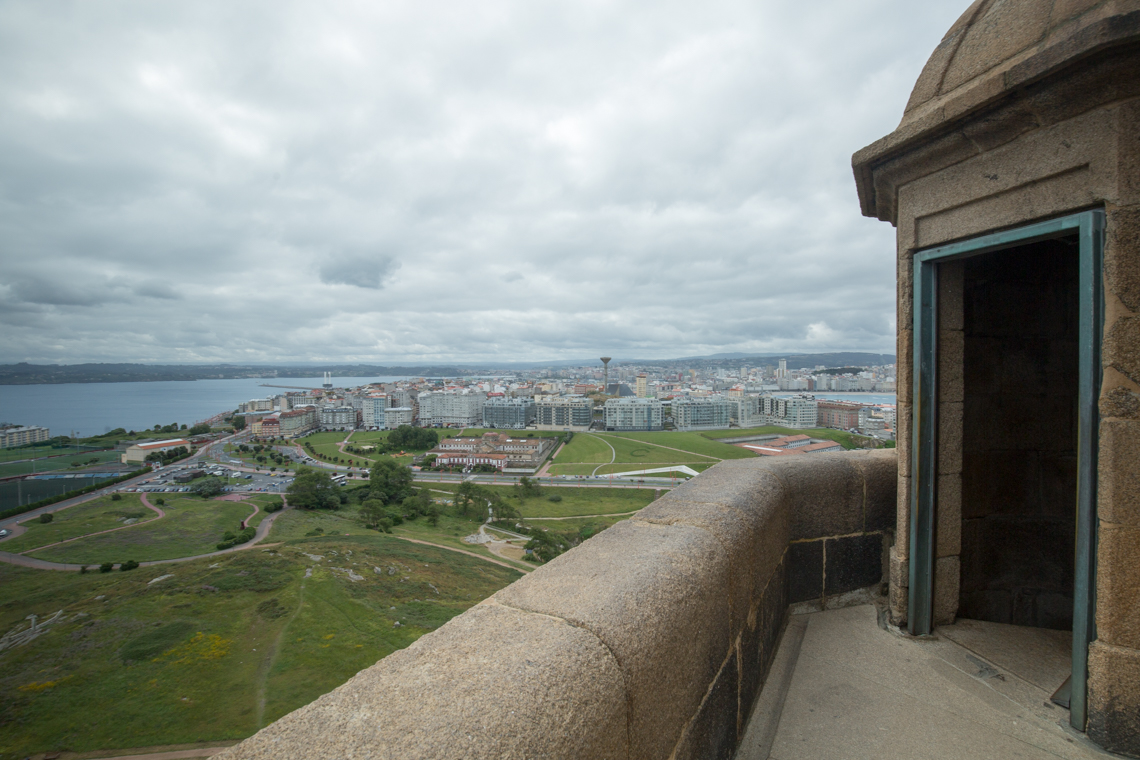
Before our flight back we headed to a typical tapas restaurant, there are plenty in this area so head along Rua Franja and take your pick. I recommend trying the Padrón peppers (pementos de Padrón), so far I haven’t found a spicy one but apparently on a rare occasion one of the pepper is super spicy.
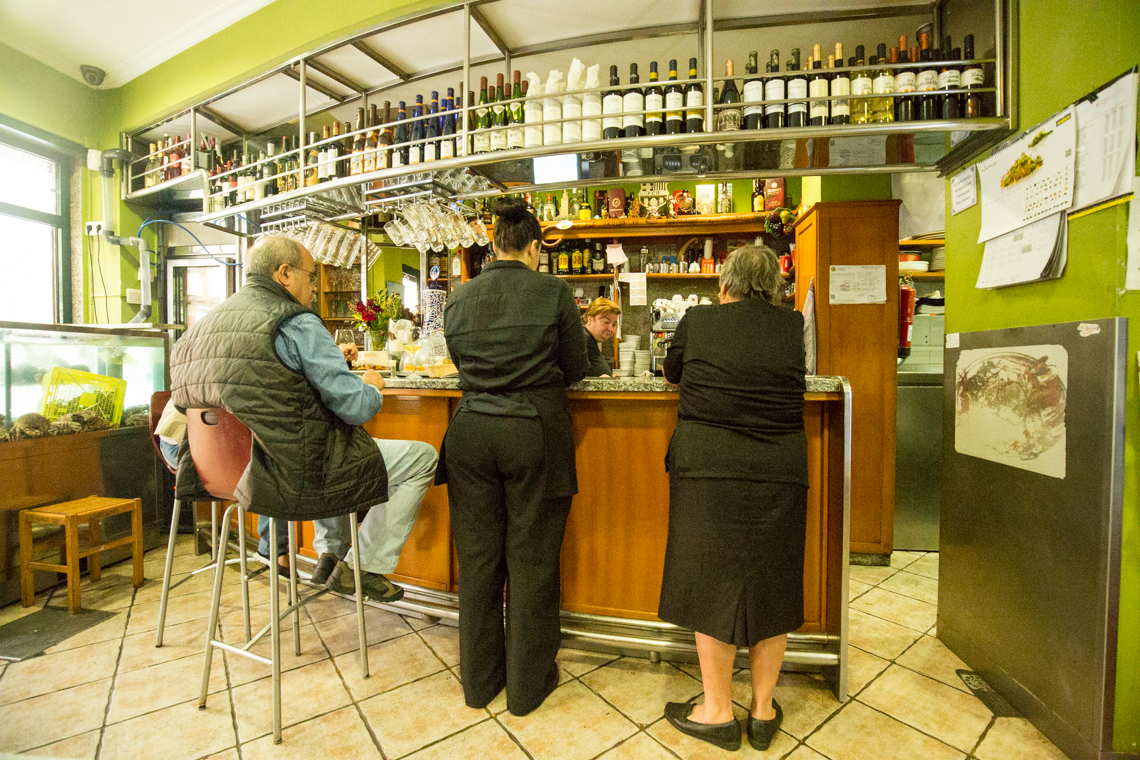
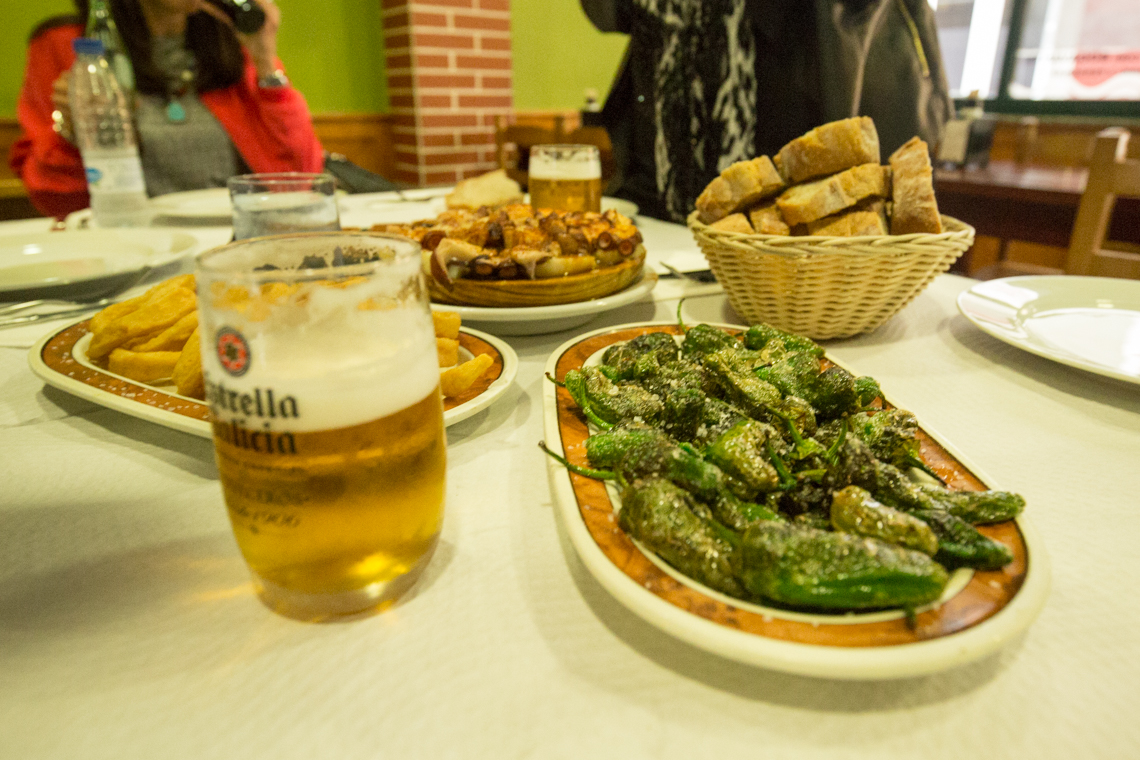
![]() 1 Aeropuerto de A Coruña (LCG) (Aeropuerto de A Coruña)
1 Aeropuerto de A Coruña (LCG) (Aeropuerto de A Coruña)
So there you have it, our three day ultimate itinerary for Galicia’s northern coastline. We packed an awful lot into just three days so don’t be scared to pick an choose some of the places and add in your own too or even extend your trip. There’s plenty to do and see along the route in the peaceful, calm and relaxing region that’s full of beautiful coastal scenery and amazing tasty seafood. I can’t wait to go back!
If you do have any questions regarding Galicia, the itinerary or you have recommendations of your own, do leave them in the comments below.
Practical Information for Galicia
Flight Options
Although we flew into and out of La Coruña there are plenty of options with three airports near by. For example, you could fly into La Coruña pick up your hire car, take a road trip through the region and then fly out of Asturias airport (the neighbouring regions airport). Or you could do the opposite.
There are also flights to and from Santiago de Compostela (1 hour drive from La Coruña) with Vueling, Easyjet and Ryanair.
Example Flights Options
Option 1
£200 approx
Vueling – London Heathrow – La Coruña (Fri)
Coruña
Option 2
£120 approx
Vueling – £60 London Gatwick – Asturias (Fri)
Vueling – £60 La Coruña – London Heathrow (Mon)
Option 3
£140 approx – 1 Hour drive to La Coruña from Santiago de Compostela
Vueling – London Gatwick – Santiago de Compostela (Fri)
Vueling – Santiago de Compostela – London Gatwick (Mon)
Option 4
£103 approx
Vueling London Gatwick to Asturias £44 (Wed)
Vueling La Coruña to London Heathrow £59 (Mon)
Car Hire
La Coruña, Asturias and Santiago de Compostela airports have car hire with the usual large rental companies such as Hertz, AVIS, Trifty and Europcar.
This post was brought to you as a result of the #inGalicia blog trip, created and managed by Captivate in partnership with Spain.Info. TravMonkey maintains full editorial control of the content published on this site.
